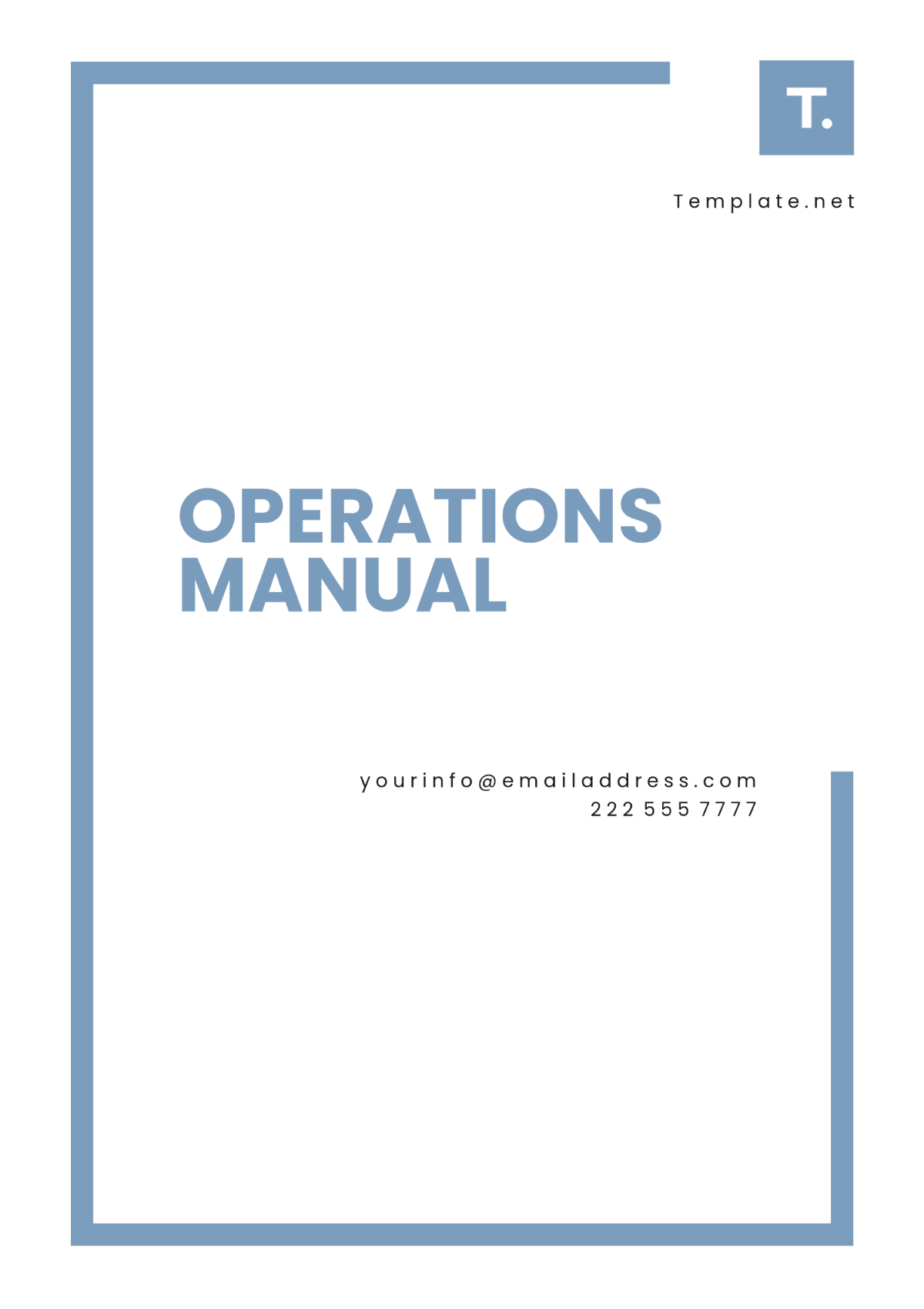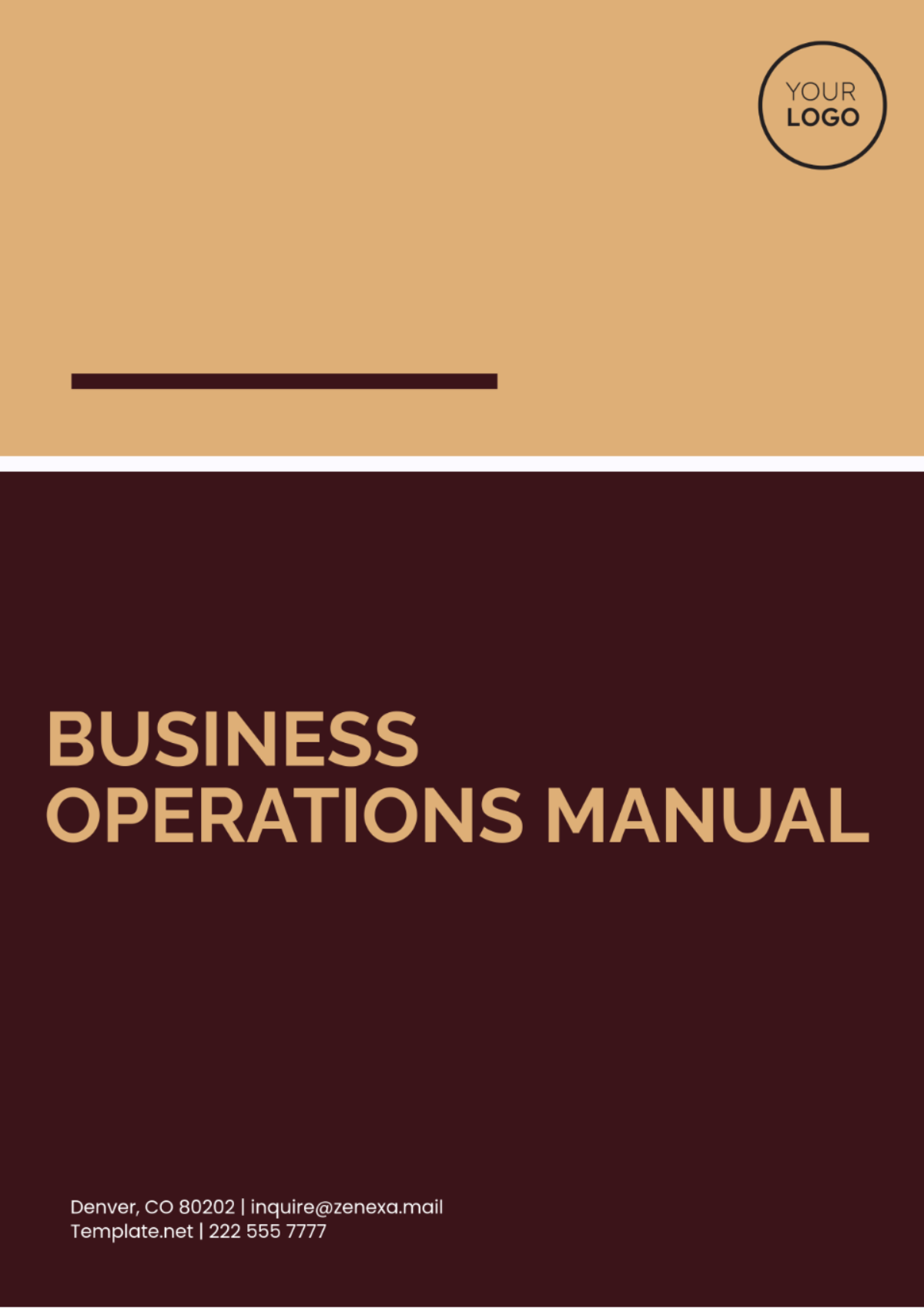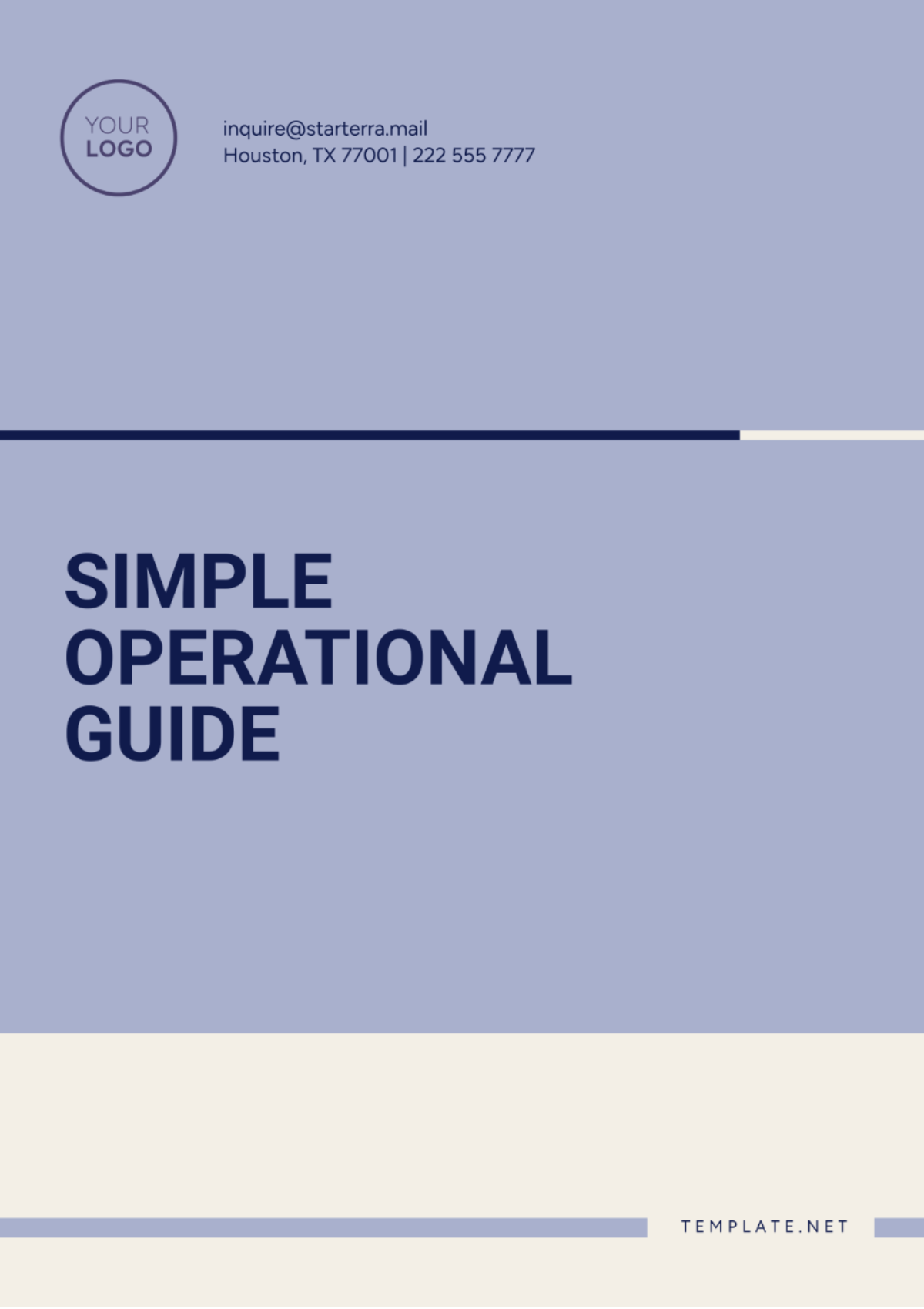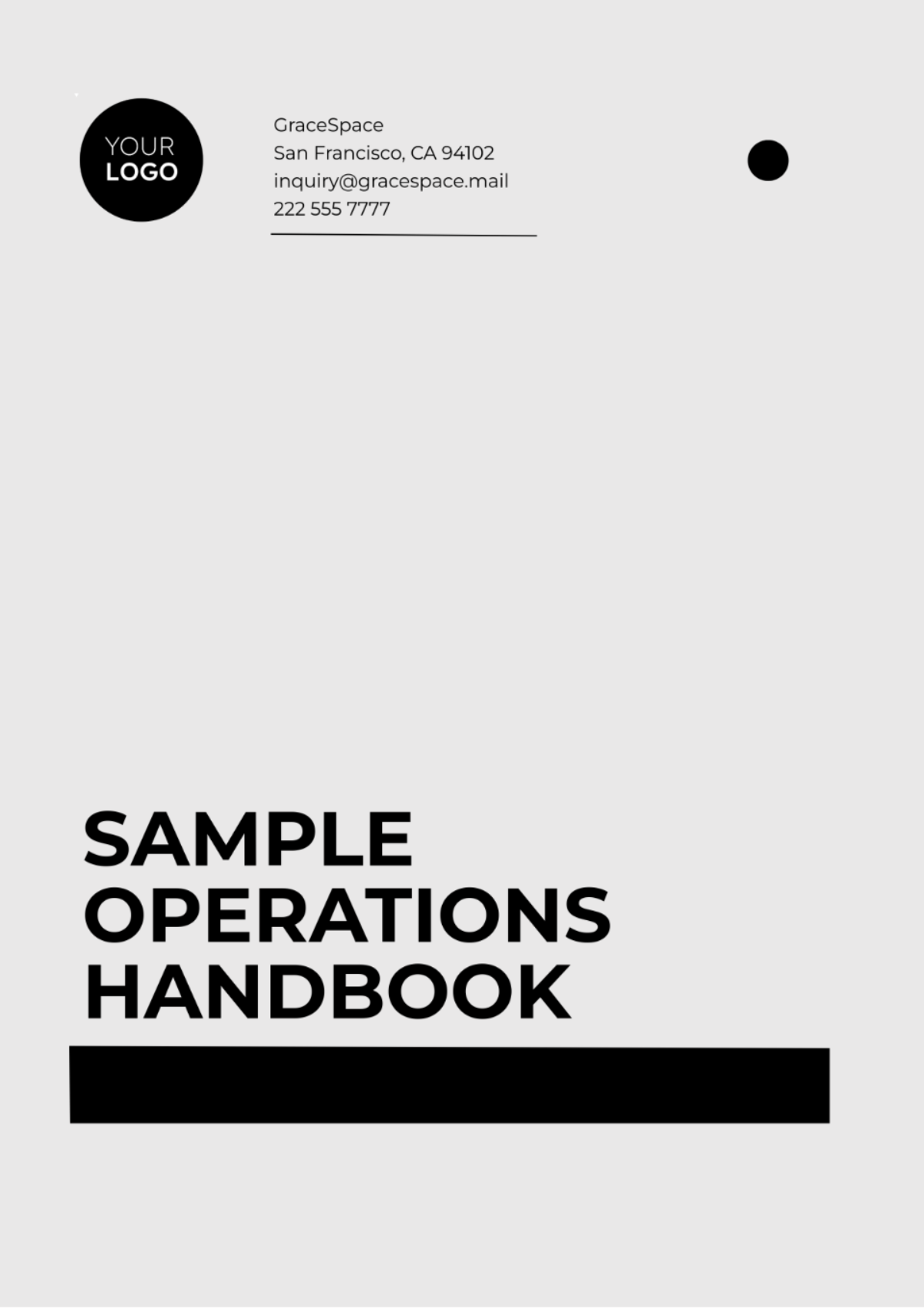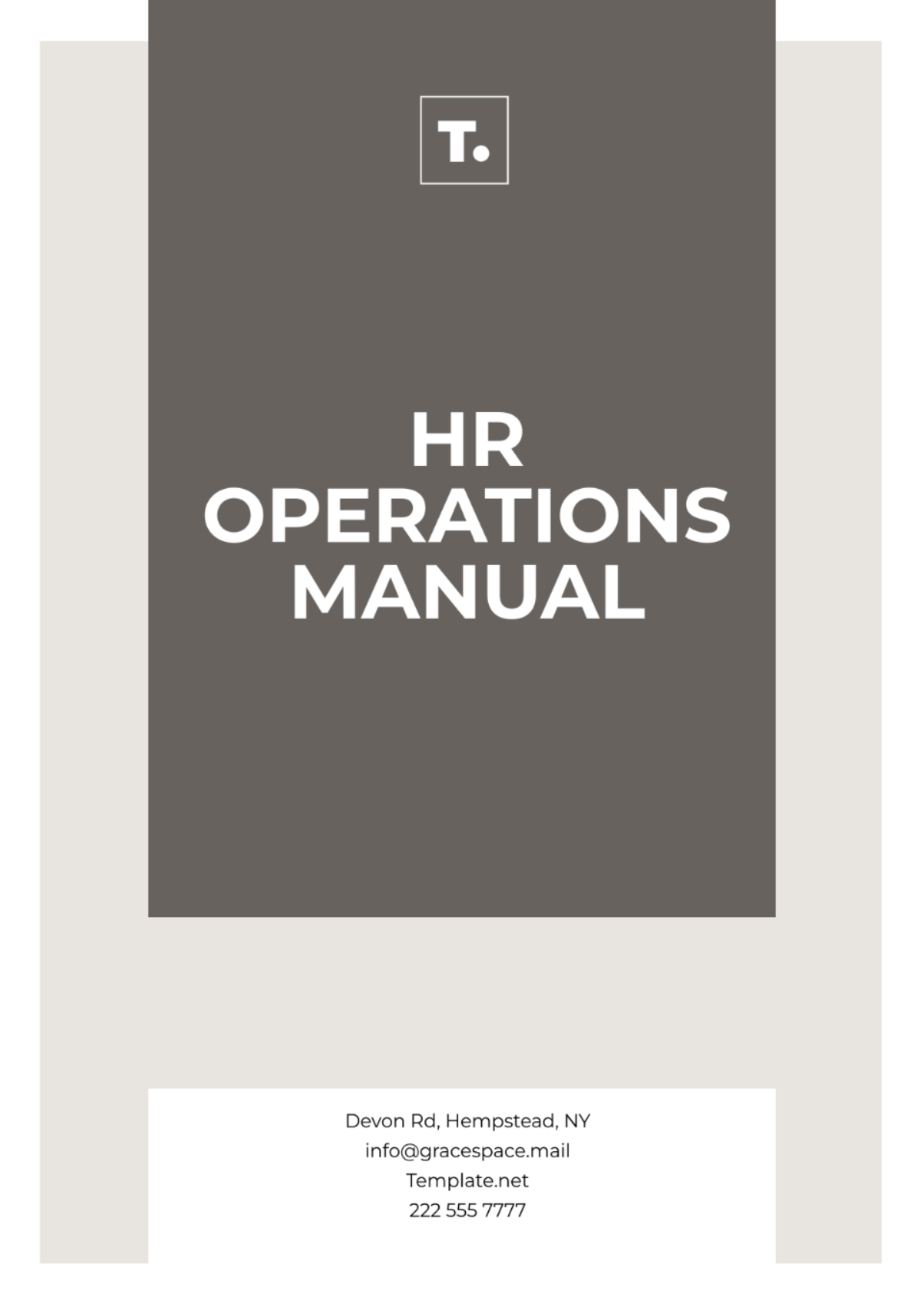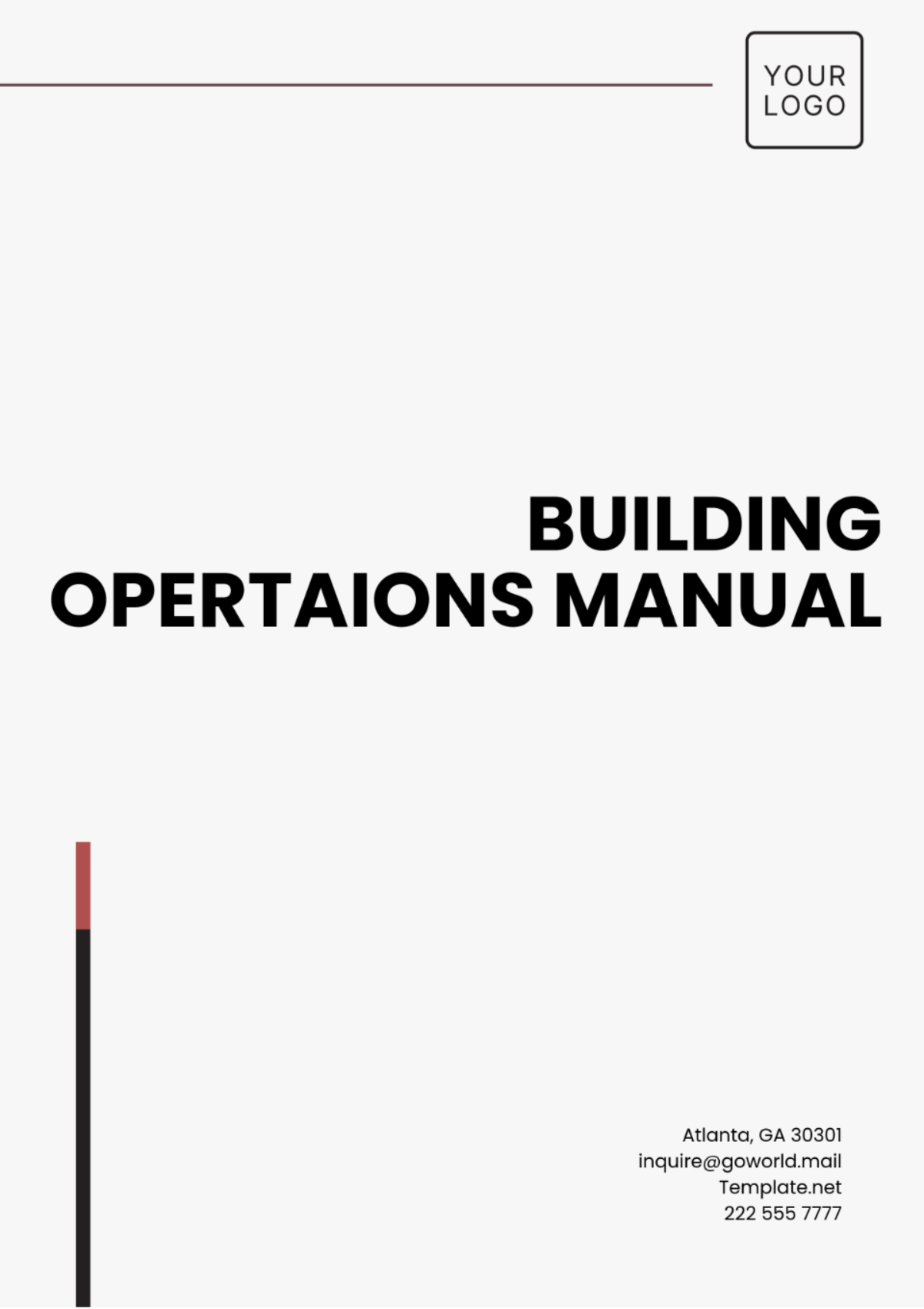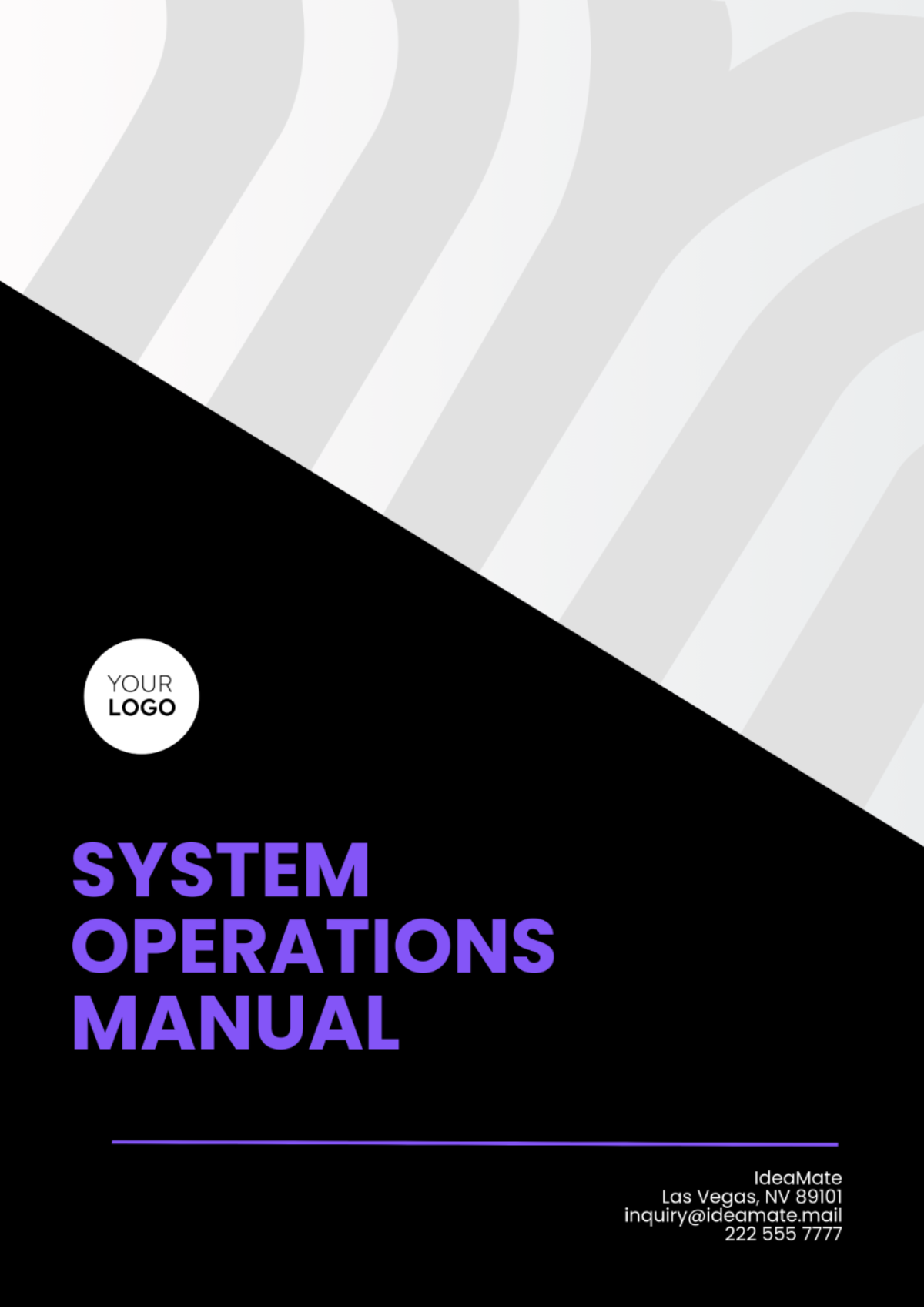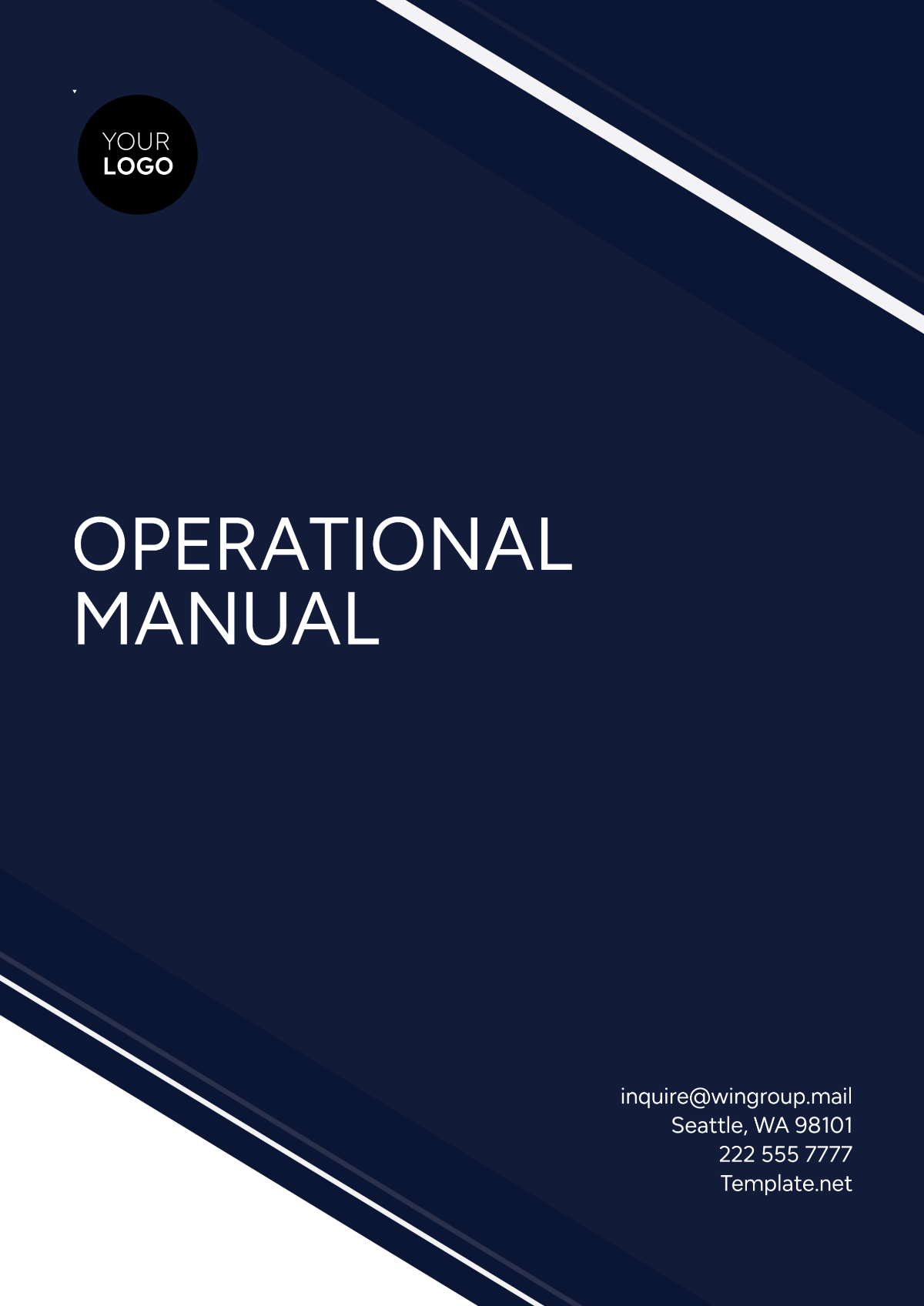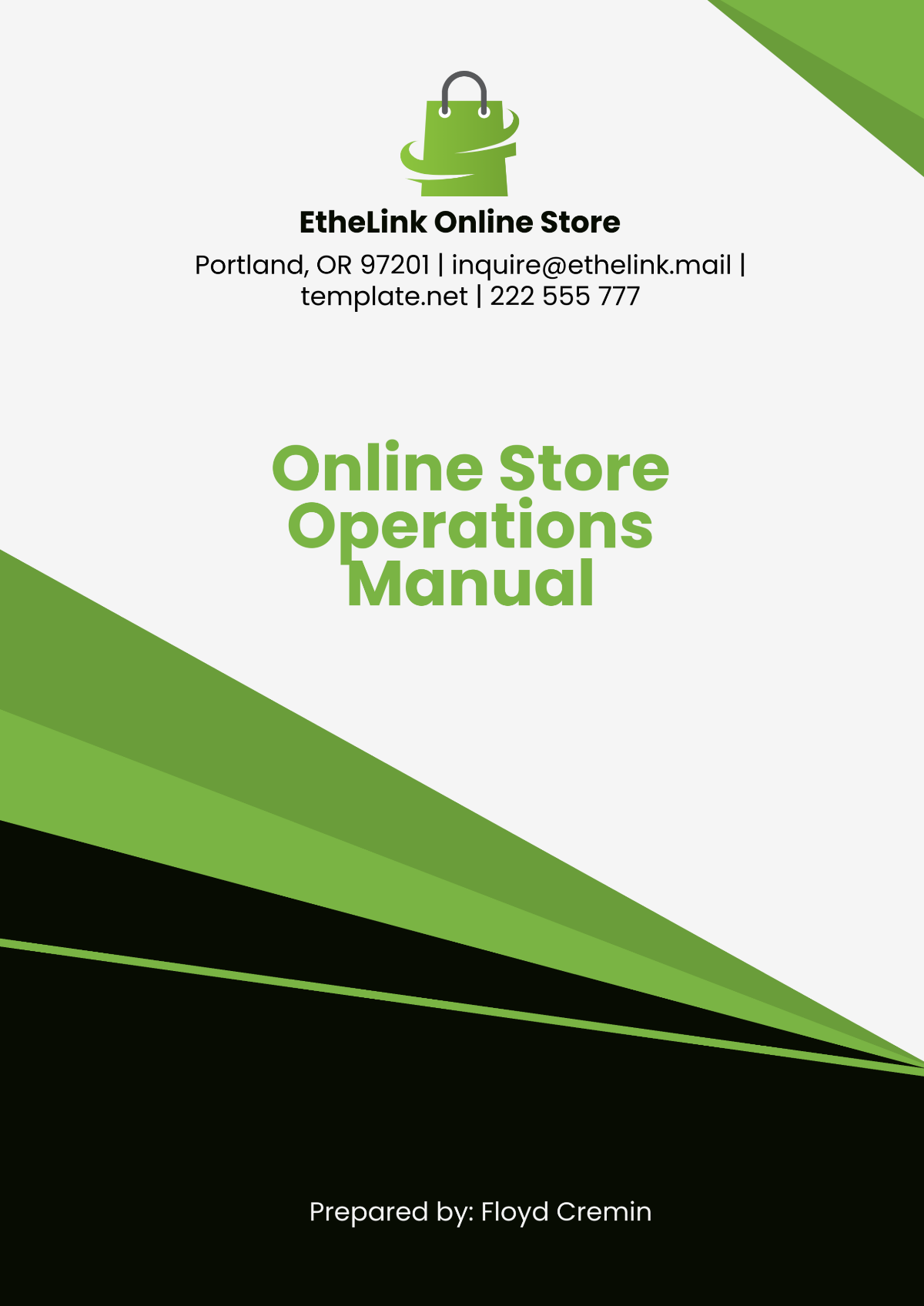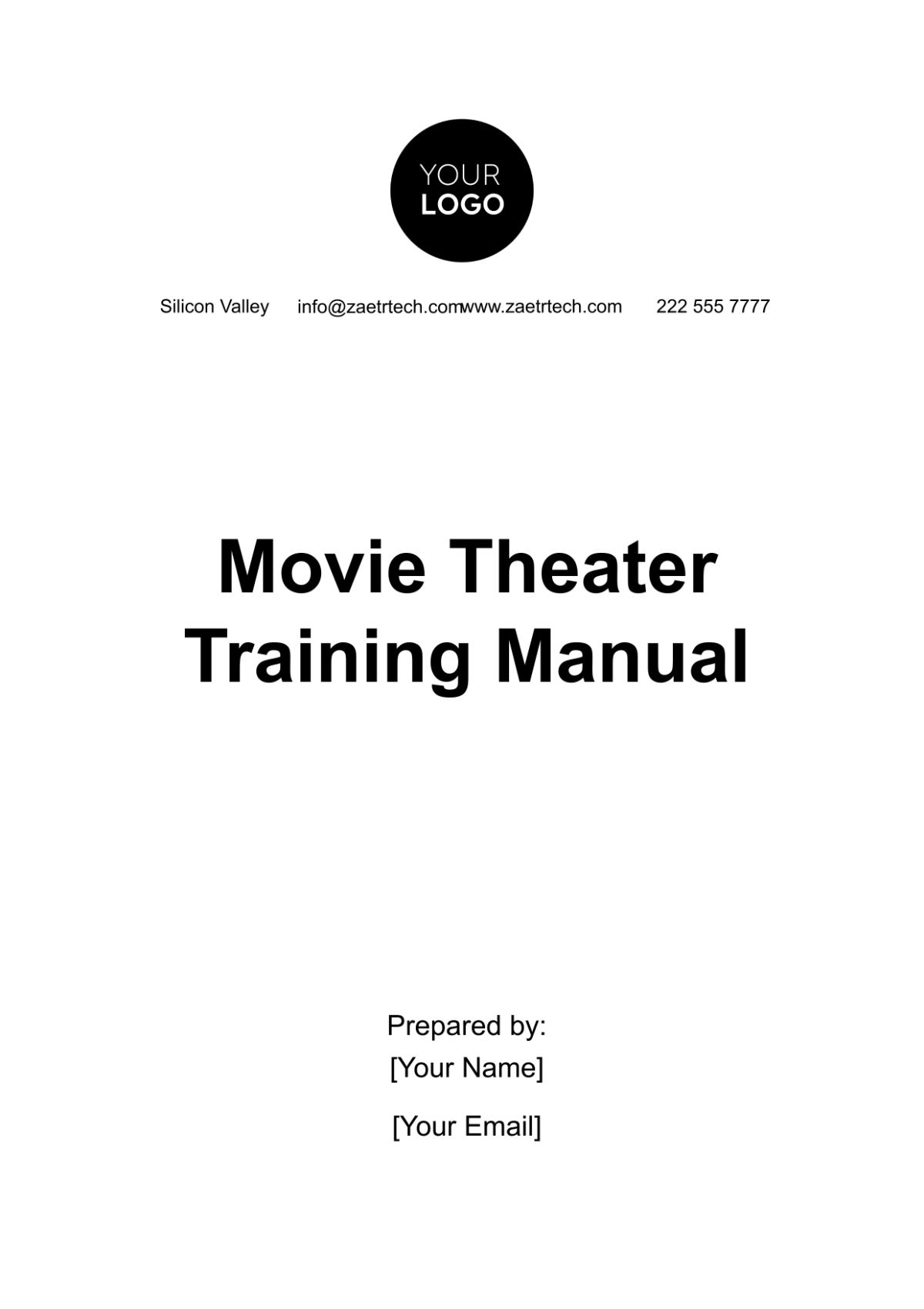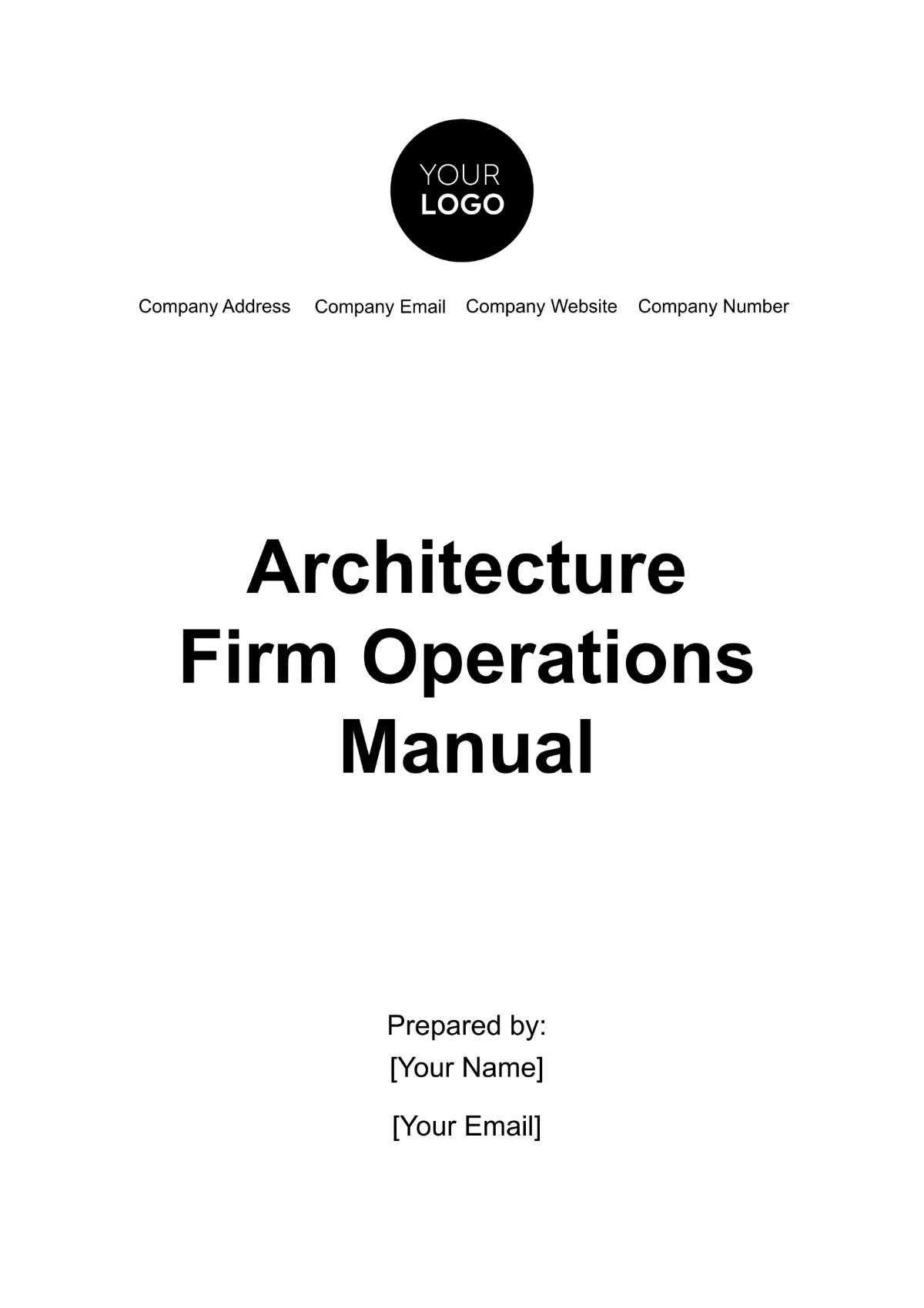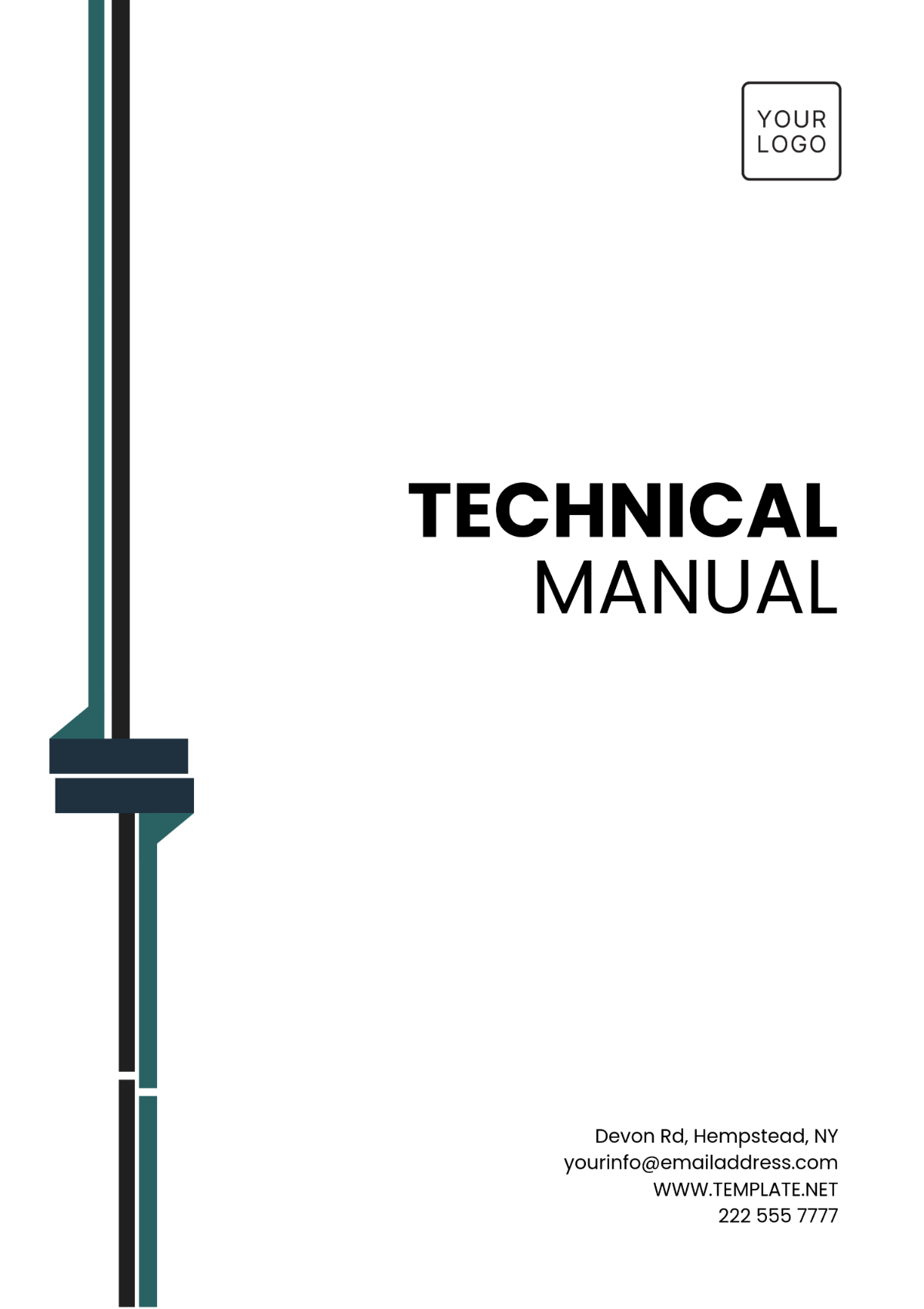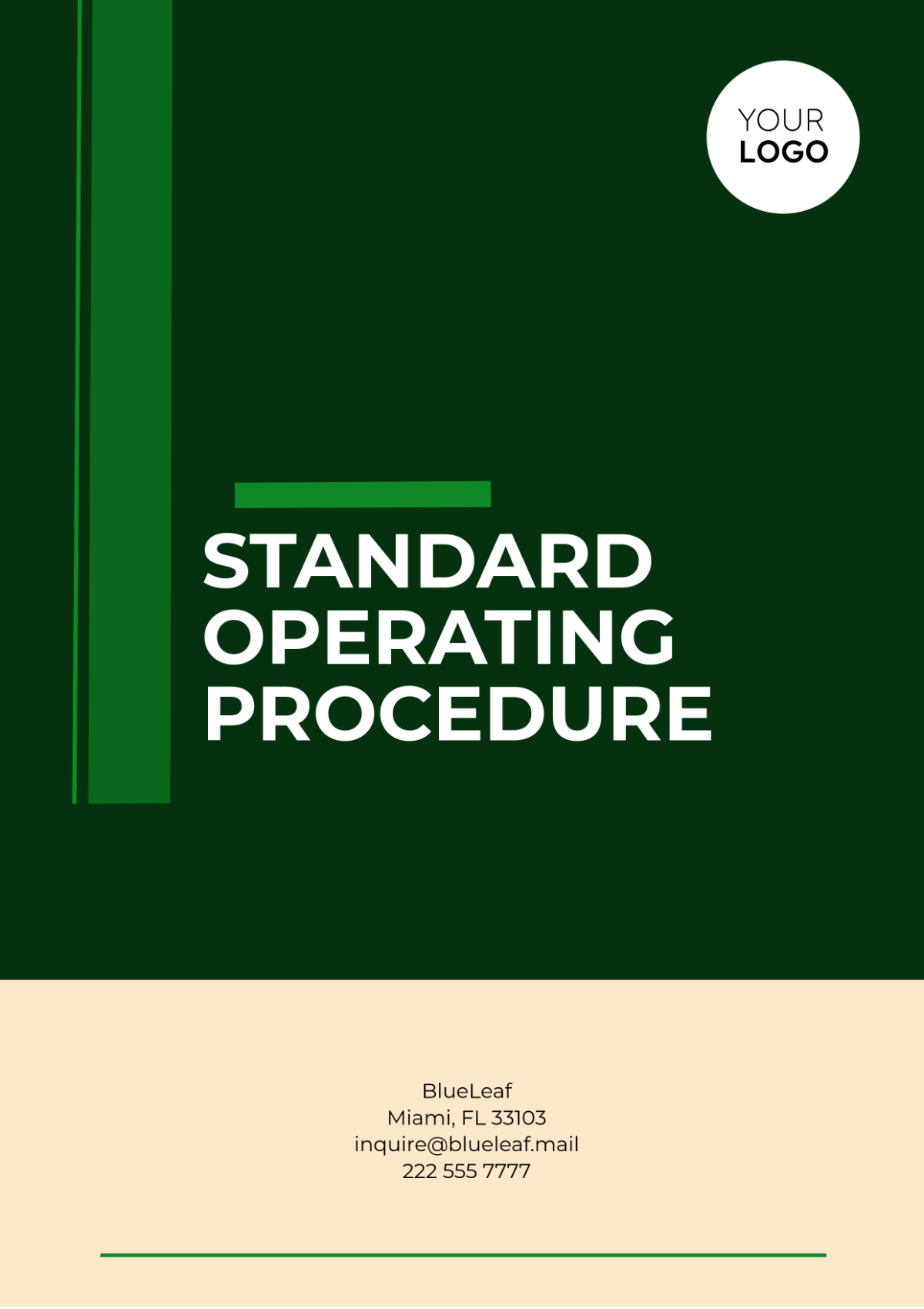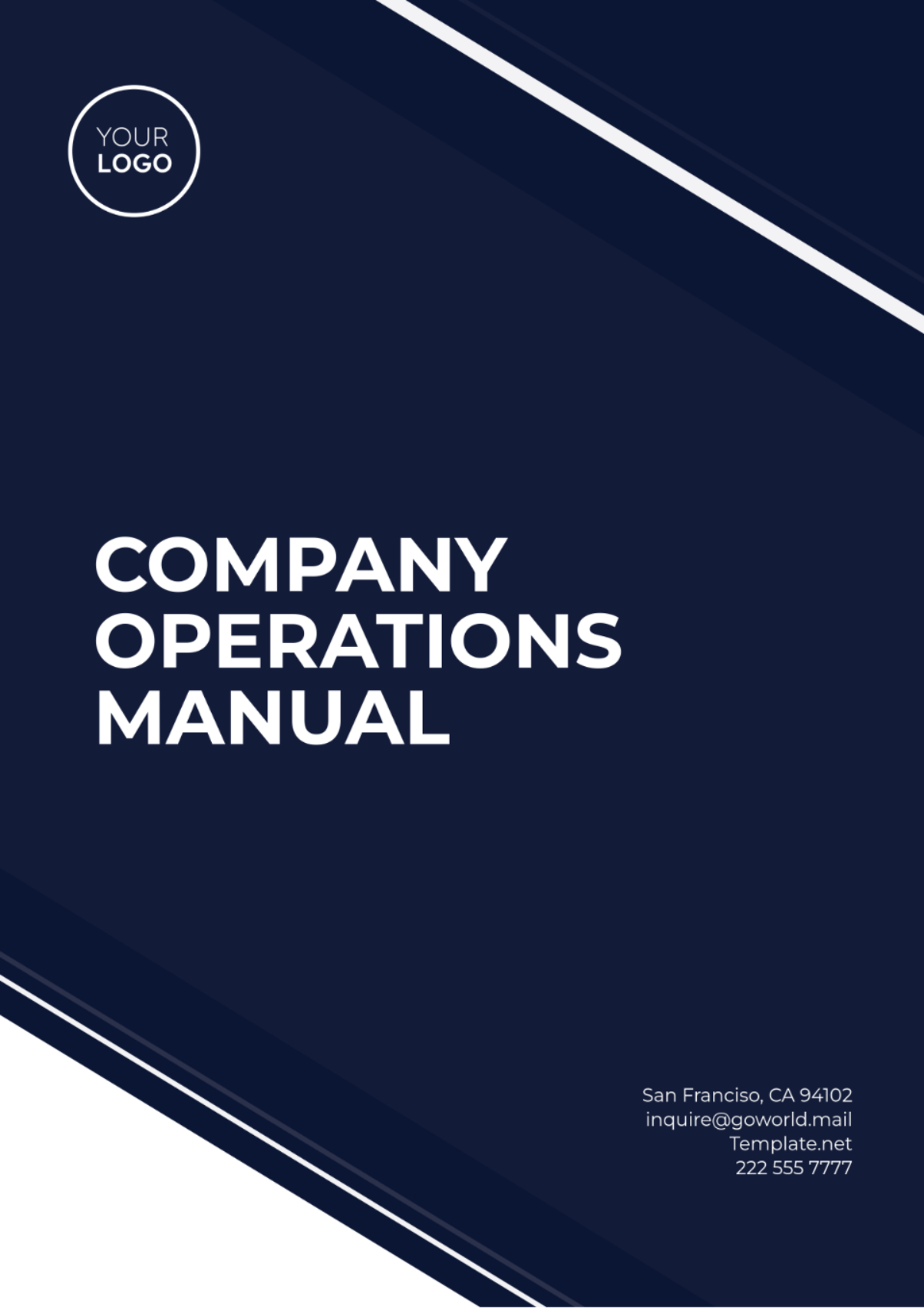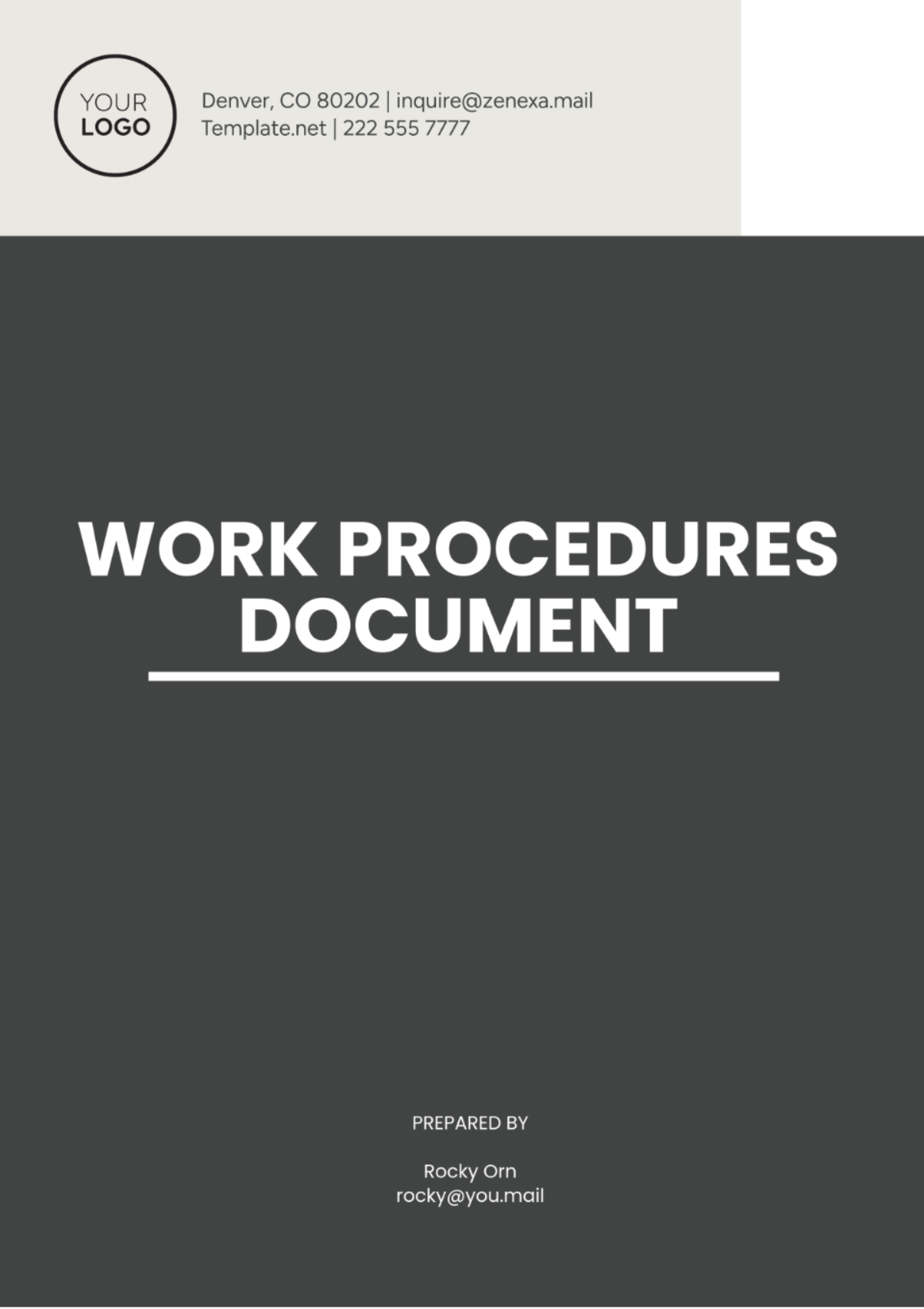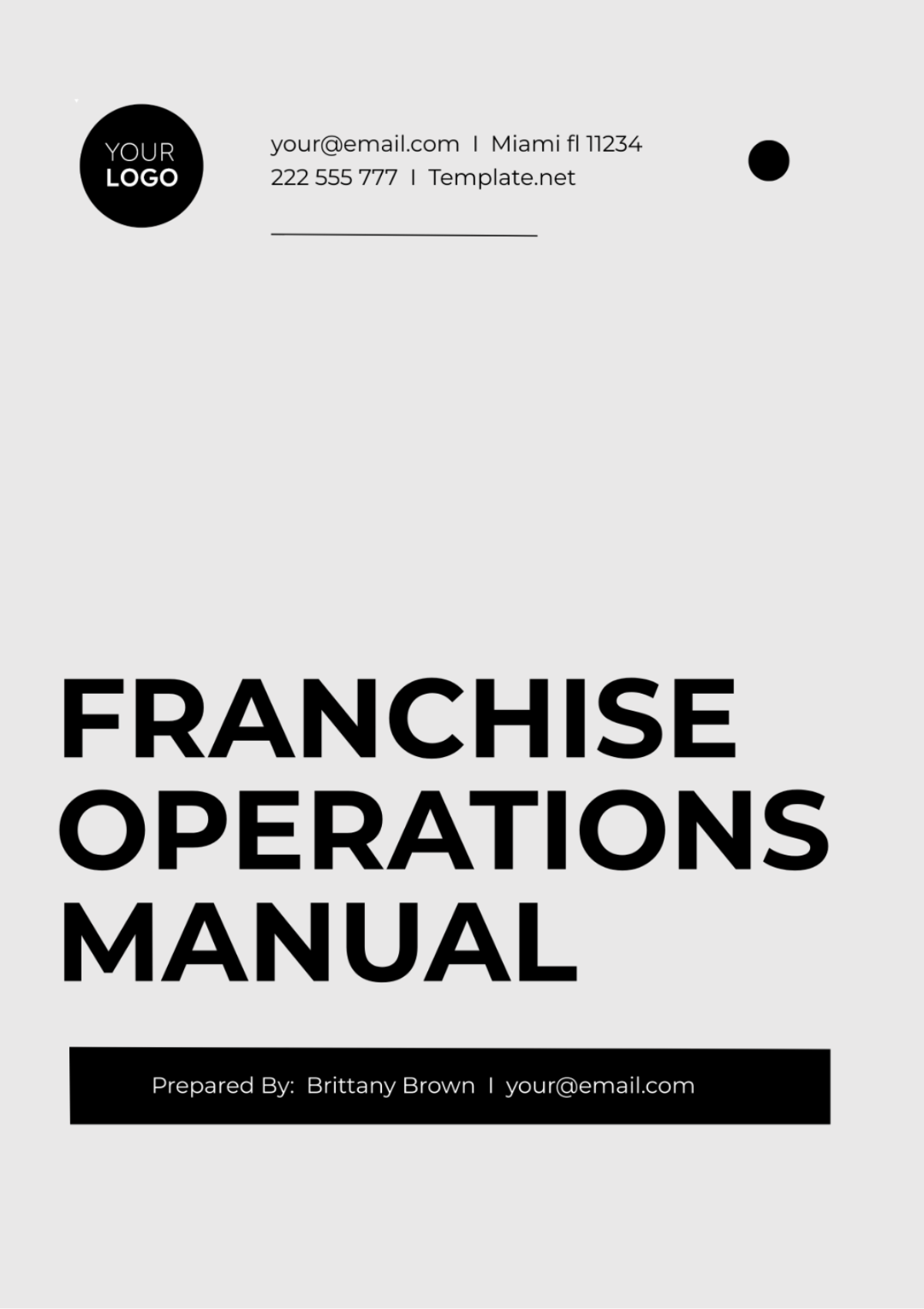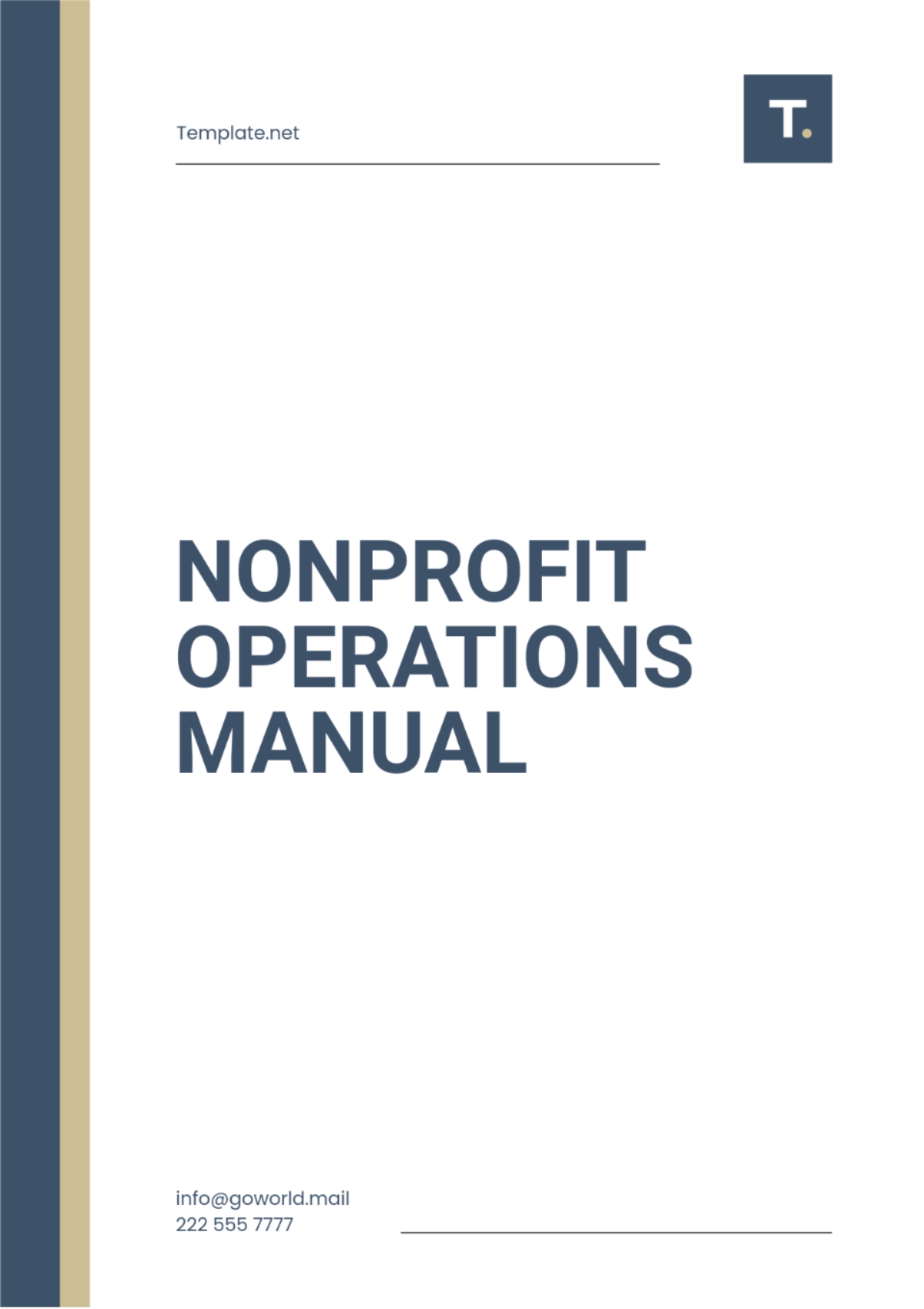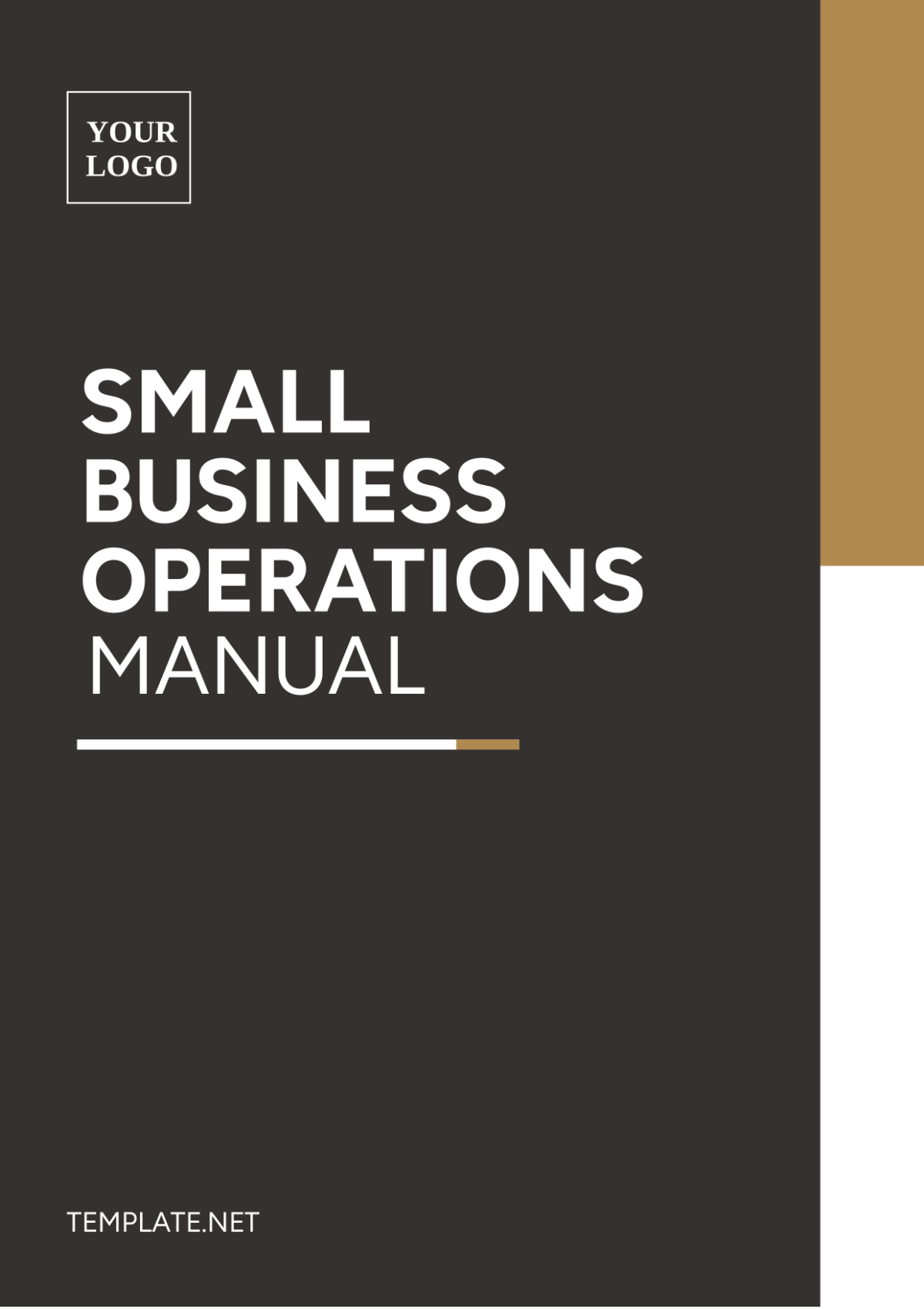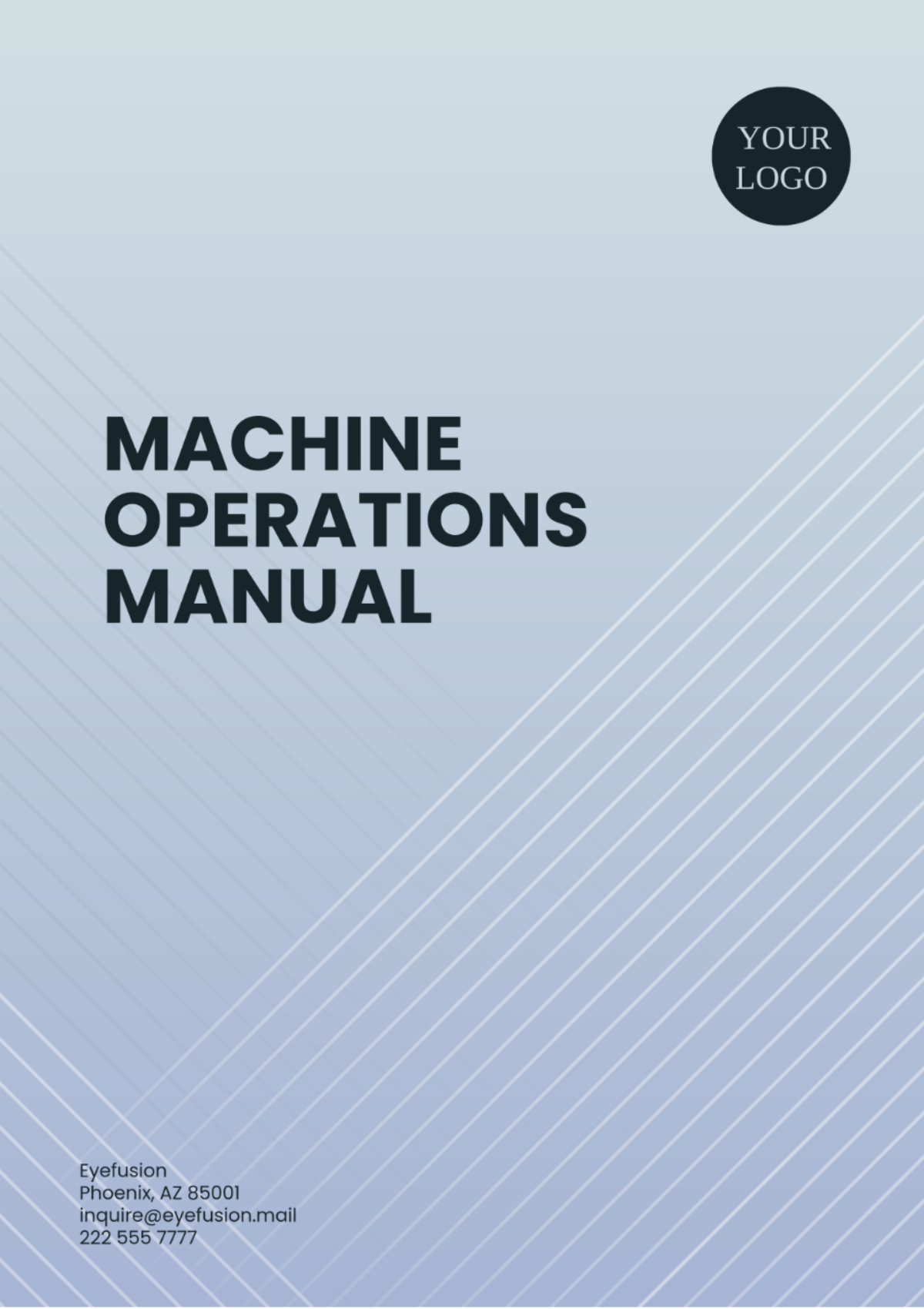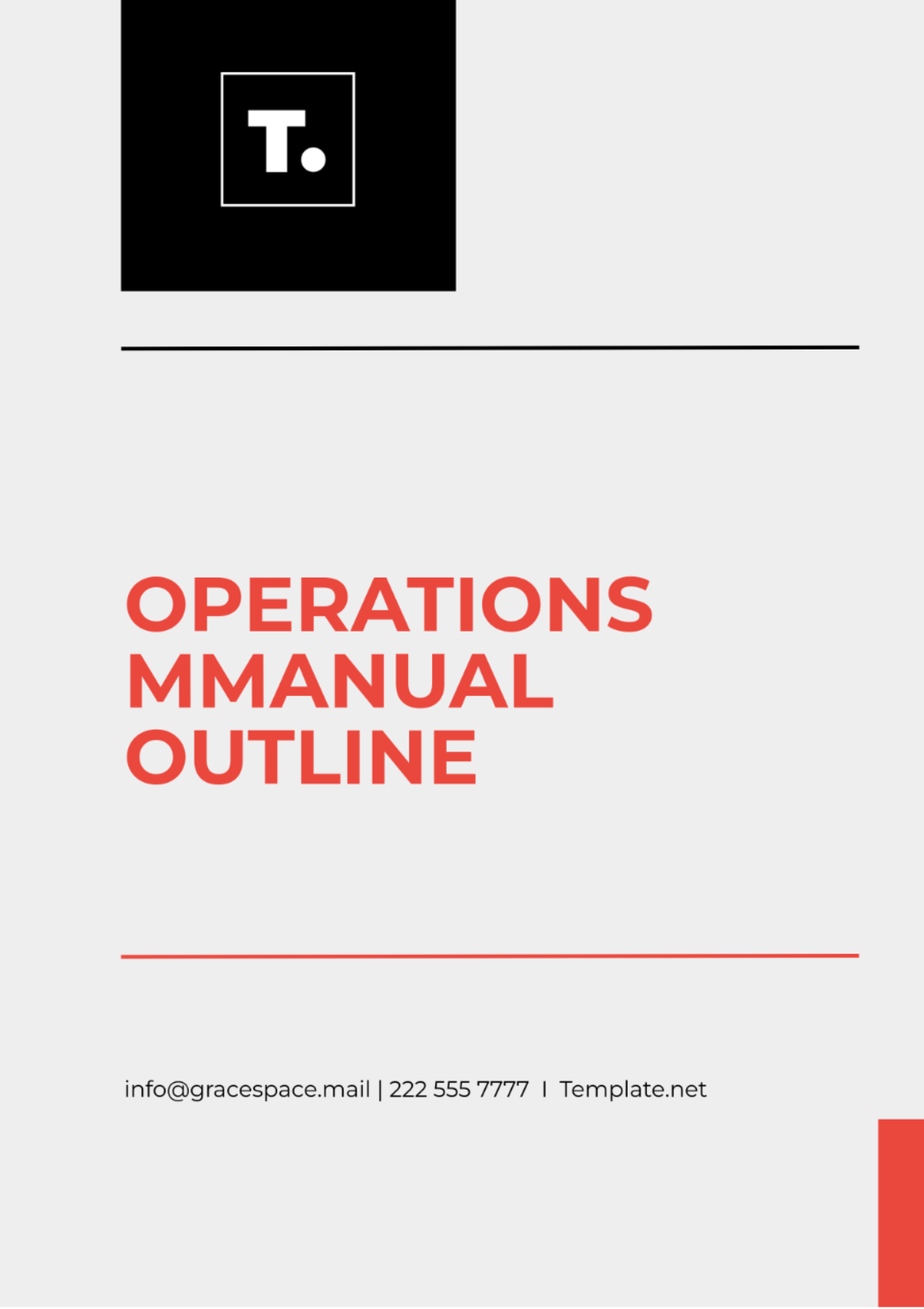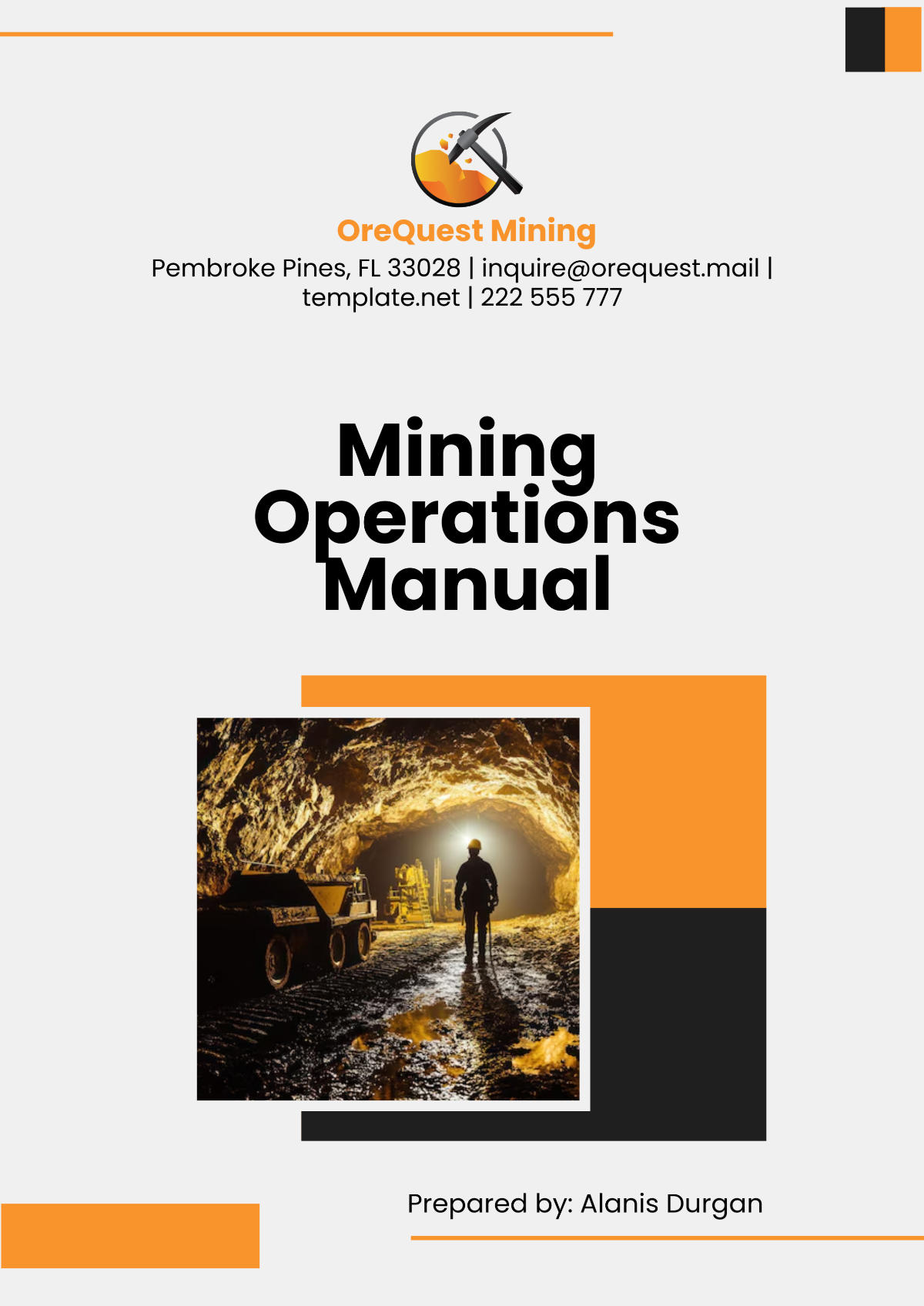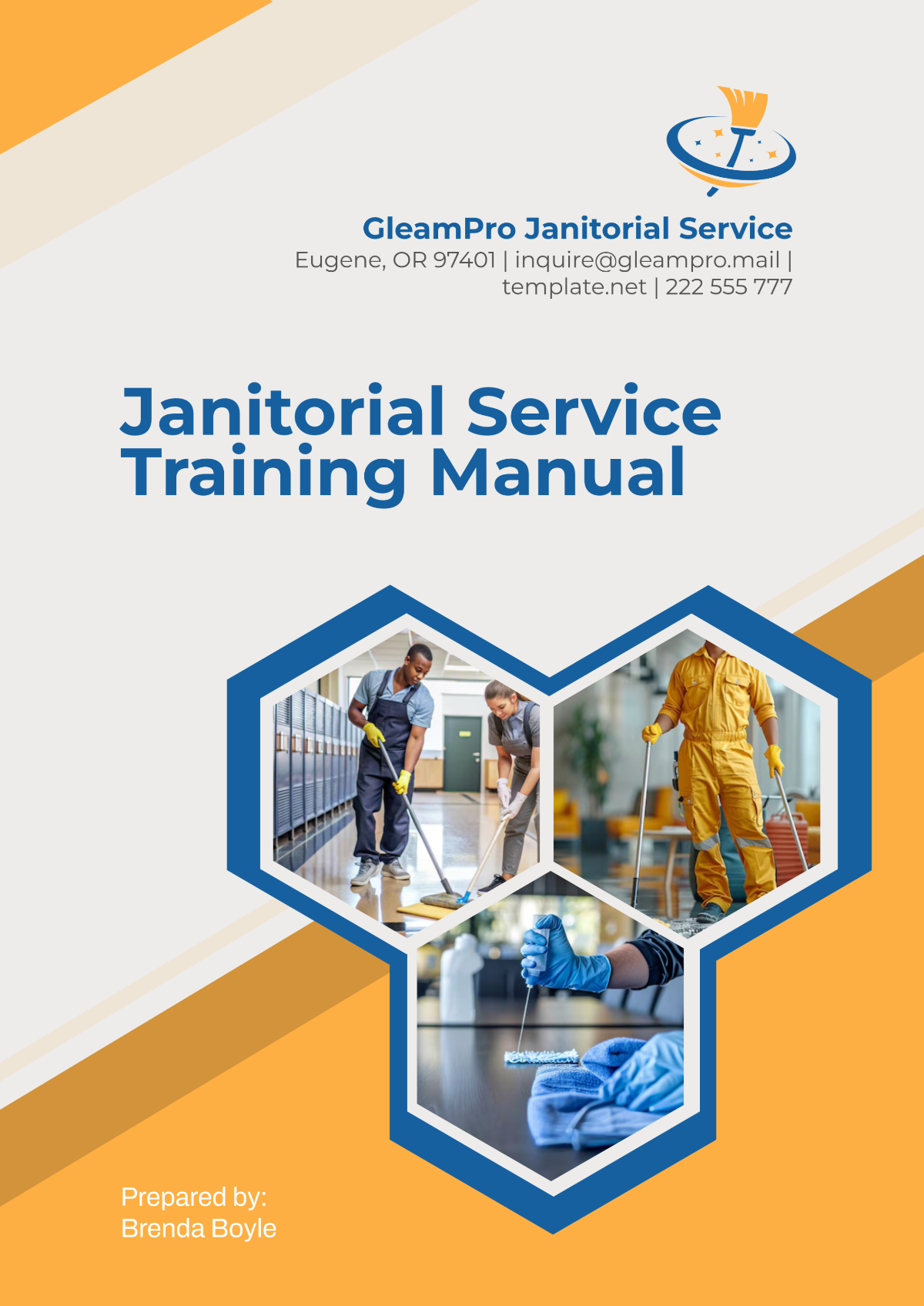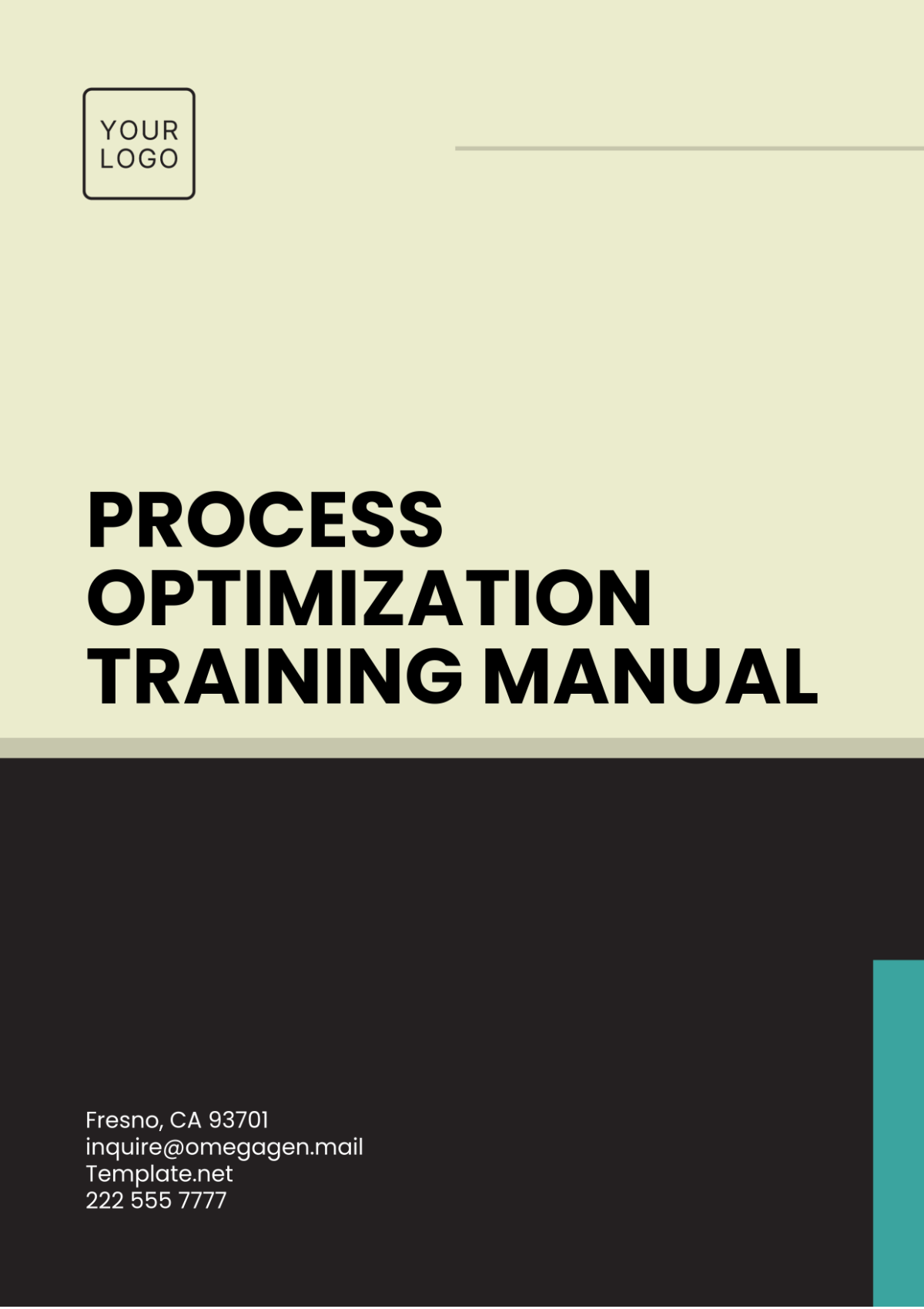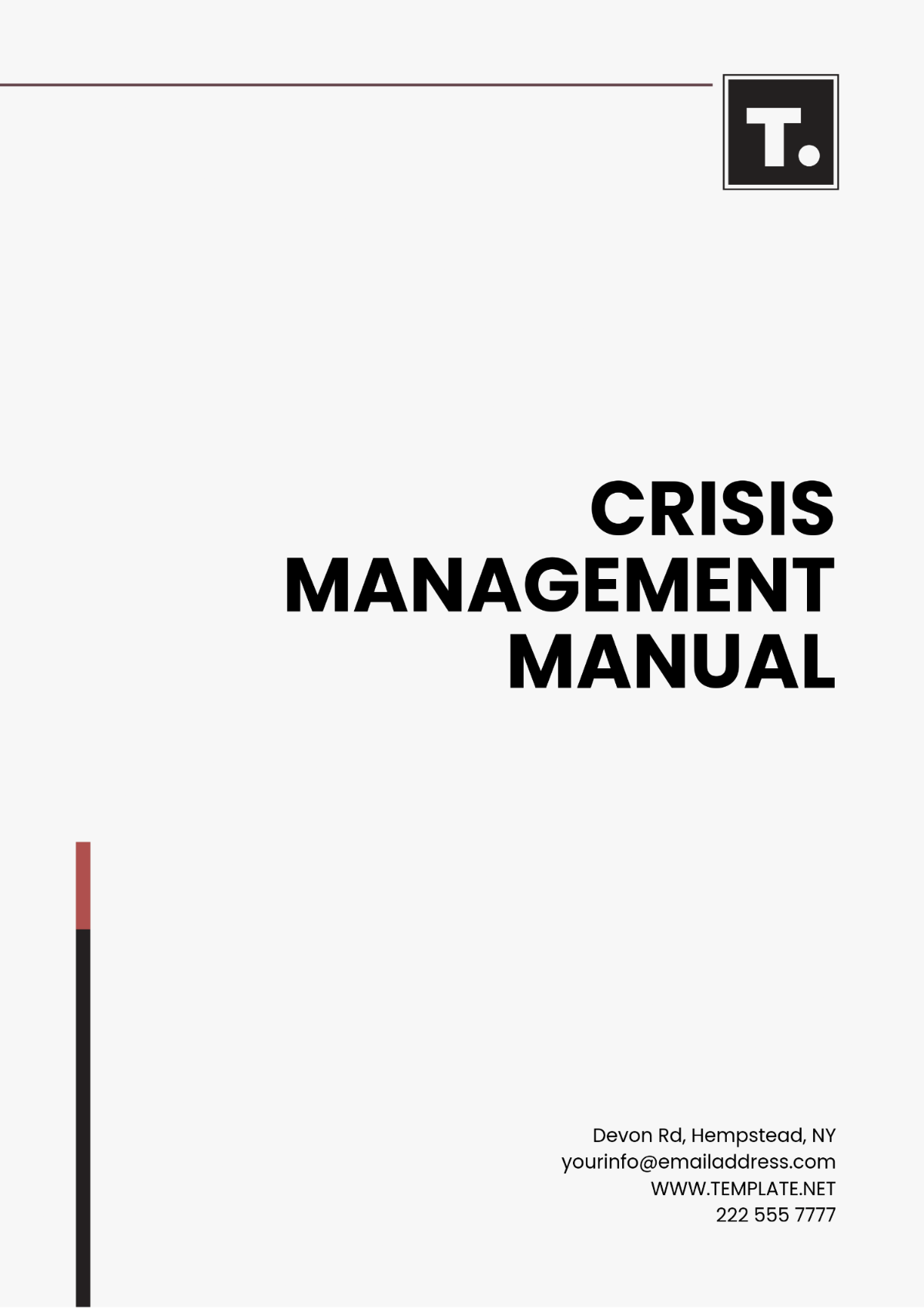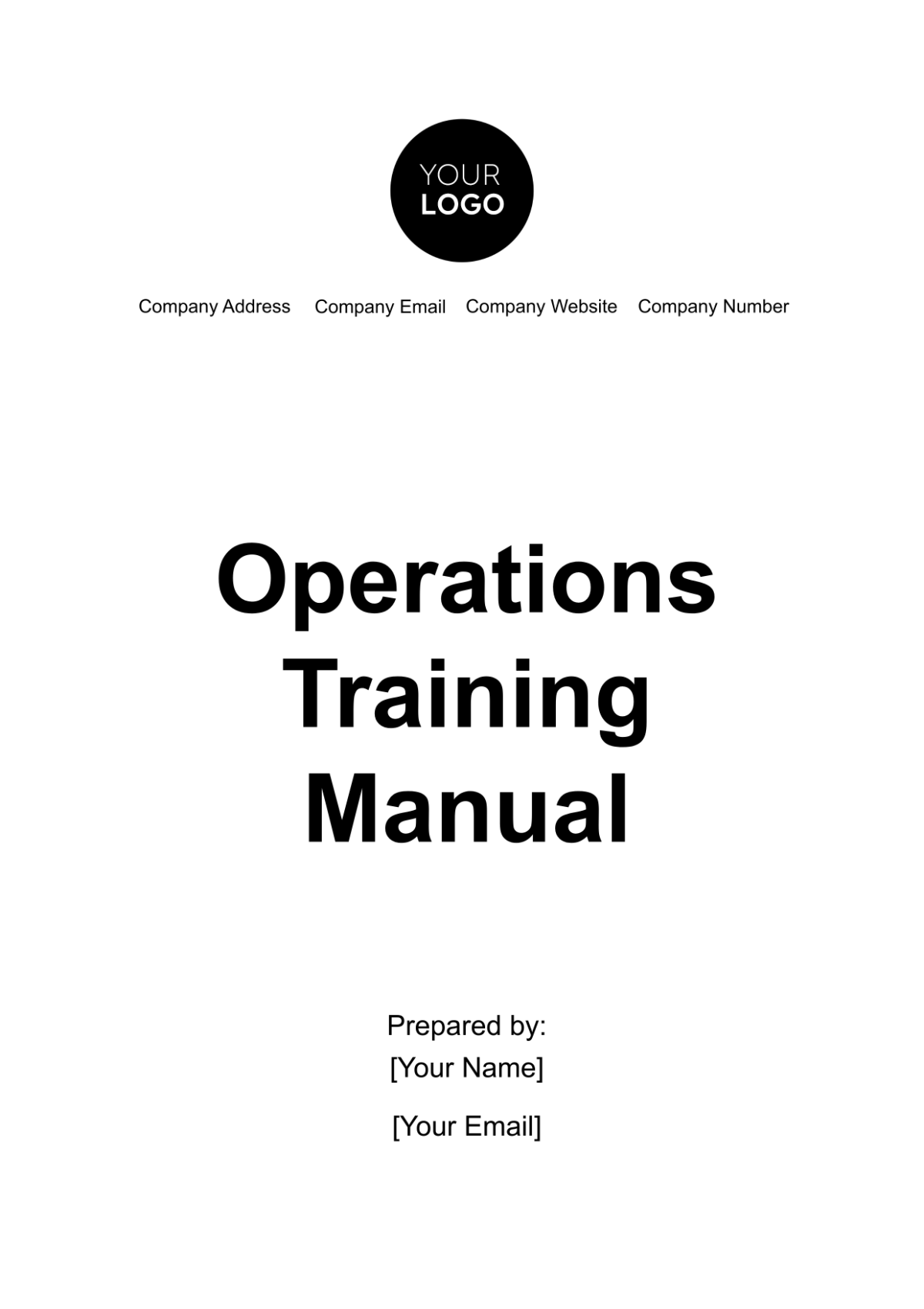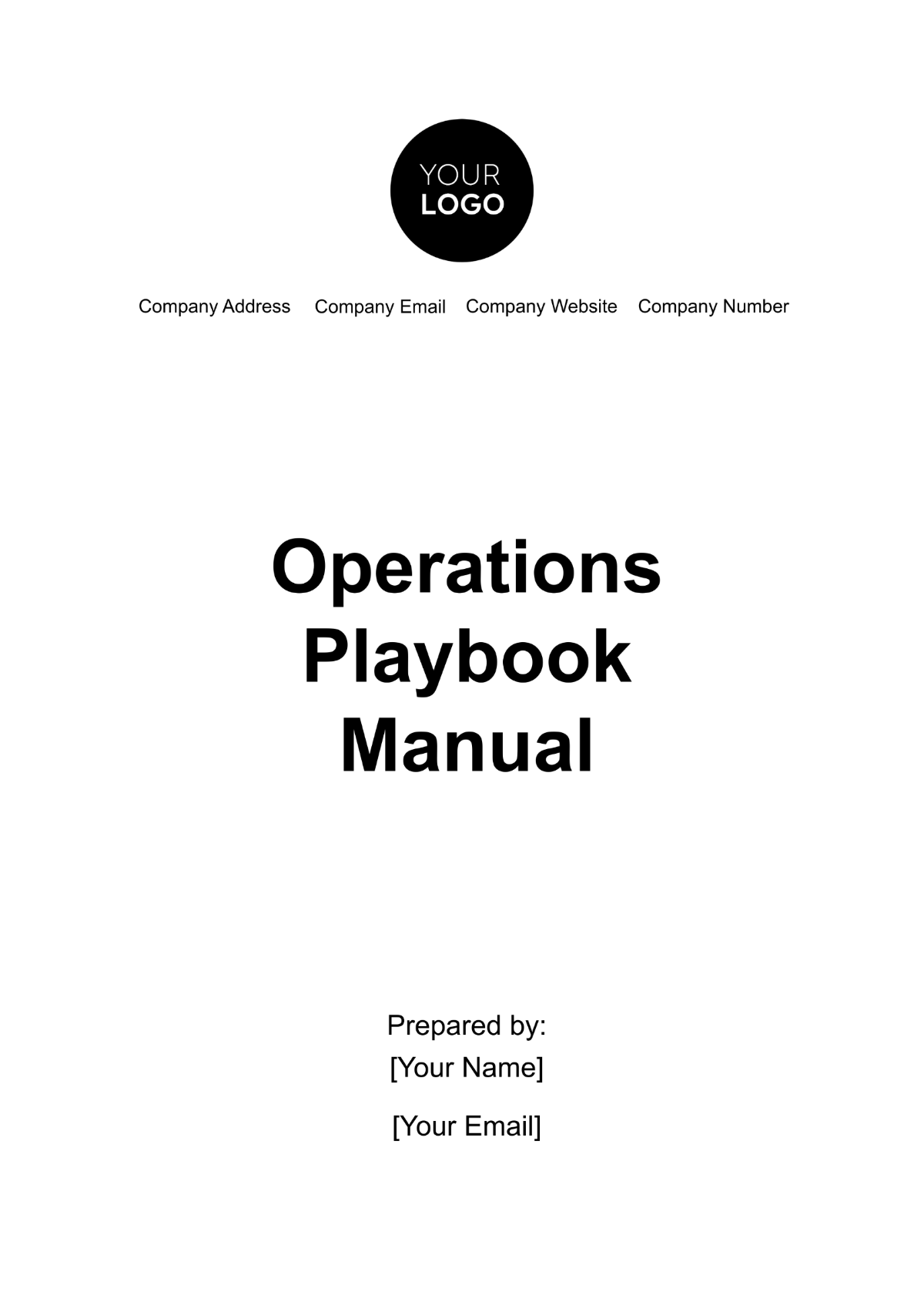Director Operations Manual
I. Introduction
A. Purpose of the Manual
The Director Operations Manual serves as a comprehensive guide to the roles, responsibilities, and procedures for the Director of [Your Company Name]. This manual is designed to ensure the director can efficiently navigate their role, make informed decisions, and meet organizational goals. It also provides clear instructions on operational standards, decision-making frameworks, and compliance requirements.
B. Overview of the Director's Role
The Director of Operations is responsible for overseeing the daily functions of the company, implementing strategic initiatives, and ensuring the alignment of resources with business objectives. This role is critical to driving operational excellence, fostering interdepartmental collaboration, and maximizing organizational efficiency. The director also plays a key role in leading crisis management efforts and ensuring sustainable growth.
C. Structure of the Manual
This manual is organized into several sections, each addressing specific aspects of the director’s role. These include operational procedures, communication protocols, decision-making processes, performance evaluation, and crisis management guidelines. It is intended to be a living document that will evolve as company needs change and operational best practices are refined.
D. Confidentiality and Disclaimers
All information within this manual is confidential and intended solely for internal use by [Your Company Name] employees. Sharing of any information outside the organization requires prior written approval from the legal team. The contents of this manual are subject to updates and revisions, which will be communicated to all relevant parties.
II. Organizational Overview
A. Company History and Mission
Founded in 2025, [Your Company Name] is a global leader in [industry, e.g., renewable energy solutions], with a commitment to innovation, sustainability, and delivering value to our customers. Our mission is to provide cutting-edge technologies and services that drive the future of [specific industry]. Our values are centered on integrity, customer satisfaction, and environmental responsibility.
B. Core Values and Culture
We are guided by the following core values: innovation, sustainability, inclusivity, and customer-first. Our culture emphasizes collaboration, open communication, and a commitment to excellence. We empower our teams to think creatively and challenge the status quo to continuously improve our services.
C. Organizational Structure
Our company is structured into four main divisions: Research & Development, Operations, Sales & Marketing, and Finance & Legal. The Director of Operations directly oversees the Operations Division and collaborates with other department heads to align organizational goals. Below is a simplified view of the organizational hierarchy:
Position | Reporting To |
|---|---|
Director of Operations | CEO/COO |
Senior Operations Manager | Director of Operations |
Operations Staff | Senior Operations Manager |
Administrative Support | Senior Operations Manager |
D. Key Stakeholders and Partners
Our key stakeholders include shareholders, clients, government regulators, and our employees. We also maintain strategic partnerships with several industry leaders, including [Partner Company 1], [Partner Company 2], and [Partner Company 3]. These relationships play a crucial role in our success and market positioning.
E. Business Objectives and Strategic Goals
In 2051, our primary strategic goals include expanding into new global markets, developing advanced renewable technologies, and improving operational efficiencies by 15%. Our overarching business objective is to become the world's most trusted provider of [specific service/technology] by 2055. Achieving these goals requires strategic leadership, innovation, and focused operational management.
III. Director’s Role and Responsibilities
A. Job Title and Reporting Structure
The Director of Operations reports directly to the Chief Executive Officer (CEO) and works closely with other senior executives to develop and implement operational strategies. This position holds a leadership role within the company, requiring oversight of operations across multiple regions and departments. The Director also provides periodic reports to the board on operational performance and initiatives.
B. Scope of Authority and Decision-Making
The Director has the authority to approve operational budgets, hire senior management within the Operations Division, and implement operational changes across the company. They are also responsible for ensuring that decisions align with long-term organizational objectives. All major financial decisions and capital expenditures must be approved by the CEO and CFO.
C. Key Responsibilities
Leadership and Strategy | Lead the Operations Division, aligning strategies with the company’s overall vision. Oversee the implementation of operational projects that support long-term growth. |
Operational Oversight | Monitor day-to-day operations and ensure efficient processes across all departments. Handle resource allocation, process optimization, and quality assurance. |
Budget and Resource Management | Manage the operational budget, allocate resources effectively, and ensure financial goals are met. Oversee the allocation of staff, technology, and infrastructure to maximize operational output. |
Cross-Departmental Collaboration | Foster collaboration between departments, ensuring alignment on shared goals. Work with R&D, Finance, and HR to meet project deadlines and deliverables. |
Stakeholder Communication | Provide regular updates to internal stakeholders and report on operational performance. Represent the company at external events and meetings, ensuring transparency and trust with clients and investors. |
D. Delegation of Tasks
The Director is responsible for delegating tasks and responsibilities to senior management and other key team members. Delegation should be strategic, ensuring that team members are empowered and that tasks align with their skill sets. The Director should also monitor progress and provide guidance as necessary.
E. Key Performance Indicators (KPIs) and Success Metrics
The Director’s performance will be evaluated based on the following KPIs:
Operational efficiency improvement by 10% year-over-year.
Achievement of operational budget targets.
Successful execution of strategic projects within set deadlines.
Employee satisfaction and retention in the Operations Division.
IV. Operational Procedures
A. Daily and Weekly Responsibilities
The Director should begin each day with a review of operational reports and any updates from senior management. Weekly meetings with department heads should focus on progress toward strategic goals, resource allocation, and addressing any operational bottlenecks. Weekly reports must be submitted to the CEO summarizing key achievements, challenges, and resource needs.
B. Monthly and Quarterly Responsibilities
Each month, the Director should prepare and present a detailed report on operational performance, including key metrics and financial outcomes. Quarterly reviews should involve a deep dive into strategic objectives, project timelines, and potential adjustments to plans. These reports will be used by the executive team to track progress toward company goals.
C. Key Projects and Initiatives
Key initiatives for 2051 include the rollout of a new global supply chain management system, the launch of a new eco-friendly product line, and expansion into the Asian market. The Director is responsible for the successful implementation and monitoring of these projects, ensuring they are completed on time and within budget.
D. Operational Guidelines for Effective Management
Project Management: Ensure all major projects have clear timelines, budgets, and deliverables.
Risk Management: Proactively identify and mitigate risks that could impact operations. Develop contingency plans to address unforeseen challenges.
Resource Allocation: Ensure that resources (people, finances, technology) are allocated to projects based on priority. Regularly reassess the allocation to ensure efficiency.
Performance Monitoring: Use performance dashboards to track KPIs and adjust operational tactics as necessary.
E. Standard Operating Procedures (SOPs)
Every department under the Director’s leadership must adhere to a set of SOPs designed to streamline operations, enhance productivity, and ensure compliance with company standards. SOPs cover areas such as safety, data management, and customer service. These procedures will be updated periodically to reflect changing regulations and business needs.
F. Tools, Software, and Resources Used
Project Management Software: [Tool Name] for task assignment and timeline tracking.
ERP System: [Tool Name] for financial management and resource planning.
Communication Tools: [Tool Name] for internal communication and collaboration.
G. Documentation and Reporting Requirements
All reports and documentation related to operational activities should be stored in the company’s internal document management system. Reports must include performance data, risk assessments, and progress on key initiatives. All operational changes must be documented with rationale and communicated to relevant stakeholders.
V. Decision-Making Framework
A. Types of Decisions the Director Handles
Strategic Decisions | These involve setting long-term operational goals, entering new markets, or launching new product lines. The Director must assess the potential impact on company growth, resources, and overall direction. |
Operational Decisions | These involve day-to-day management of processes, resource allocation, and team performance. The Director should evaluate efficiency, cost-effectiveness, and team capabilities before making operational decisions. |
Financial Decisions | The Director oversees operational budgets, approves expenditures within the department, and ensures financial discipline. Major capital expenditures or budgetary shifts require approval from the CFO. |
B. Decision-Making Process
Data-Driven Decisions | The Director should rely on data analytics to inform decisions. This includes reviewing key performance indicators (KPIs), financial reports, and customer feedback to identify trends and gaps. |
Stakeholder Consultation | Major decisions, particularly those involving significant changes to strategy or budget, should be discussed with relevant stakeholders, including senior executives and department heads. |
Timeliness and Risk Management | Decisions should be made within the required time frame while considering risks. Risk analysis should be an integral part of the decision-making process to avoid negative consequences. |
C. Approval and Escalation Procedures
All decisions that involve significant changes in strategy, financial allocation, or company policy must be escalated to the CEO for final approval. Minor decisions can be made at the Director level but should be documented for transparency. In case of urgent decisions, a rapid response protocol will be followed, with immediate communication to key stakeholders.
D. Conflict Resolution and Escalation Guidelines
If conflicts arise within the team or between departments, the Director should act as a mediator to resolve issues quickly and fairly. If a resolution cannot be reached, the conflict should be escalated to the CEO or HR for intervention. All conflicts and their resolutions should be documented to ensure learning and accountability.
VI. Communication Protocols
A. Internal Communication
Direct Reports | The Director should conduct weekly one-on-one meetings with senior managers to discuss operational progress, challenges, and resources. These meetings are crucial for maintaining alignment and providing support. |
Cross-Departmental Teams | The Director should lead monthly cross-departmental meetings to ensure alignment on strategic initiatives and to address any interdepartmental issues. |
Executive Leadership Team | The Director is expected to attend executive meetings where high-level strategic decisions are made and provide insights into operational performance and resource needs. |
B. External Communication
Client and Partner Communication | The Director must be available for high-level meetings with clients and partners to discuss operational performance, expectations, and ongoing projects. Regular updates and follow-ups are necessary to maintain strong relationships. |
Public Relations and Media | The Director may be required to speak at public events or in the media to represent the company’s operational strengths. Communication with the PR team is essential to ensure consistent messaging. |
Legal and Regulatory Authorities | The Director is responsible for maintaining communication with relevant authorities to ensure compliance with industry regulations. All required reports and documentation must be submitted within the deadlines set by regulatory bodies. |
C. Reporting Structure and Frequency
The Director will submit bi-weekly reports to the CEO detailing operational performance, resource usage, financial outcomes, and project progress. Quarterly reports will be submitted to the board with a more comprehensive analysis of strategic goals, achievements, and any roadblocks. All reports must follow the standard template and be submitted on time.
D. Meeting Protocols
Regular Check-ins | Weekly operational meetings with the leadership team are essential for discussing key performance areas and adjusting priorities. |
Board Meetings | Quarterly board meetings will focus on major updates related to strategic initiatives, financial status, and key risks. |
Departmental Updates | Monthly department meetings are designed to discuss operational progress and address issues that may arise at the department level. |
VII. Compliance and Ethical Guidelines
A. Legal and Regulatory Compliance
Industry Regulations | The Director must ensure that all operations comply with national and international laws governing [financial services]. This includes environmental regulations, safety standards, and data protection laws. |
Company Policies and Procedures | The Director should ensure that all company policies are followed, including those related to employee conduct, procurement, and financial practices. |
International Standards | For operations outside of [primary country], the Director must adhere to applicable international standards and regulations to ensure compliance and avoid legal penalties. |
B. Code of Conduct and Ethical Standards
The Director is expected to uphold the highest ethical standards in all interactions, both internal and external. This includes fairness in decision-making, transparency in communications, and ensuring the well-being of employees. All actions should align with the company's commitment to integrity and corporate social responsibility.
C. Conflict of Interest Guidelines
The Director must disclose any potential conflicts of interest to the CEO and avoid any situations where personal interests could interfere with professional duties. This includes relationships with suppliers, competitors, or other third parties. Failure to disclose a conflict of interest could result in disciplinary actions.
D. Confidentiality and Data Security
The Director is responsible for maintaining the confidentiality of sensitive company data, including financial records, intellectual property, and employee information. Strict adherence to data protection laws is required, and regular audits will be conducted to ensure compliance. All company data should be stored securely and accessed only by authorized personnel.
E. Reporting Violations and Whistleblower Procedures
If an employee or stakeholder suspects unethical behavior or a violation of company policies, they are encouraged to report it through the company’s whistleblower system. The Director is responsible for addressing all reported concerns and ensuring that investigations are conducted fairly and promptly. Retaliation against whistleblowers is strictly prohibited.
VIII. Performance Evaluation and Feedback
A. Regular Performance Reviews
The Director will undergo an annual performance review, which will assess leadership effectiveness, operational results, and achievement of strategic goals. This process includes self-assessment, feedback from direct reports, and input from the CEO.
Self-Assessment: The Director will complete a self-assessment to reflect on achievements and areas for improvement.
Peer and Team Feedback: Feedback from colleagues and team members is solicited to provide a comprehensive view of the Director’s performance.
Supervisory Evaluation: The CEO will conduct a formal evaluation based on established KPIs and feedback.
B. Setting Personal and Team Goals
The Director is responsible for setting clear, measurable goals for themselves and their team. These goals should align with the company’s broader objectives and be tracked regularly. Personal development goals, such as skill-building or leadership training, should also be considered.
C. Monitoring and Improving Director Effectiveness
The Director should regularly assess their own performance and make adjustments to improve leadership skills, decision-making, and operational efficiency. Tools such as leadership coaching or management training programs may be used for continuous improvement.
D. Addressing Performance Gaps
If performance gaps are identified, the Director should work closely with HR and the relevant team members to create a plan for addressing the issues. This may include training, reallocation of resources, or role adjustments. It is crucial that these gaps are addressed proactively to ensure team success.
E. Professional Development Opportunities
The Director is encouraged to pursue continuous learning through industry conferences, leadership development programs, and advanced certifications. These opportunities should be aligned with both personal interests and company needs. Annual training budgets will be allocated for these purposes.
IX. Crisis Management and Contingency Plans
A. Crisis Identification and Early Warning Systems
The Director should be able to identify early signs of crises, such as financial difficulties, operational breakdowns, or major external threats. An early warning system should be in place to quickly identify emerging issues and mobilize resources for mitigation.
Financial Crisis: Monitor cash flow, budget overruns, and major expenses.
Operational Crisis: Track disruptions in the supply chain, staff shortages, or major process failures.
Reputation Crisis: Stay informed about public perception and media coverage of the company.
B. Crisis Response Protocols
In case of a crisis, the Director will lead the immediate response, activating the crisis management team. Communication will be the priority, ensuring all employees and stakeholders are informed of the situation. The Director should take decisive action, coordinating with other executives, legal counsel, and external advisors as needed.
C. Business Continuity Plans
The Director must ensure that business continuity plans are in place and up to date. These plans should address how to maintain operations during a crisis, including backup systems, alternative suppliers, and remote work capabilities. Regular drills should be conducted to test the effectiveness of these plans.
D. Post-Crisis Review and Improvement
After the crisis is resolved, the Director should lead a thorough review to evaluate the response and identify opportunities for improvement. The lessons learned should be incorporated into updated crisis management protocols. Continuous improvement is essential to reducing risks in future crises.
